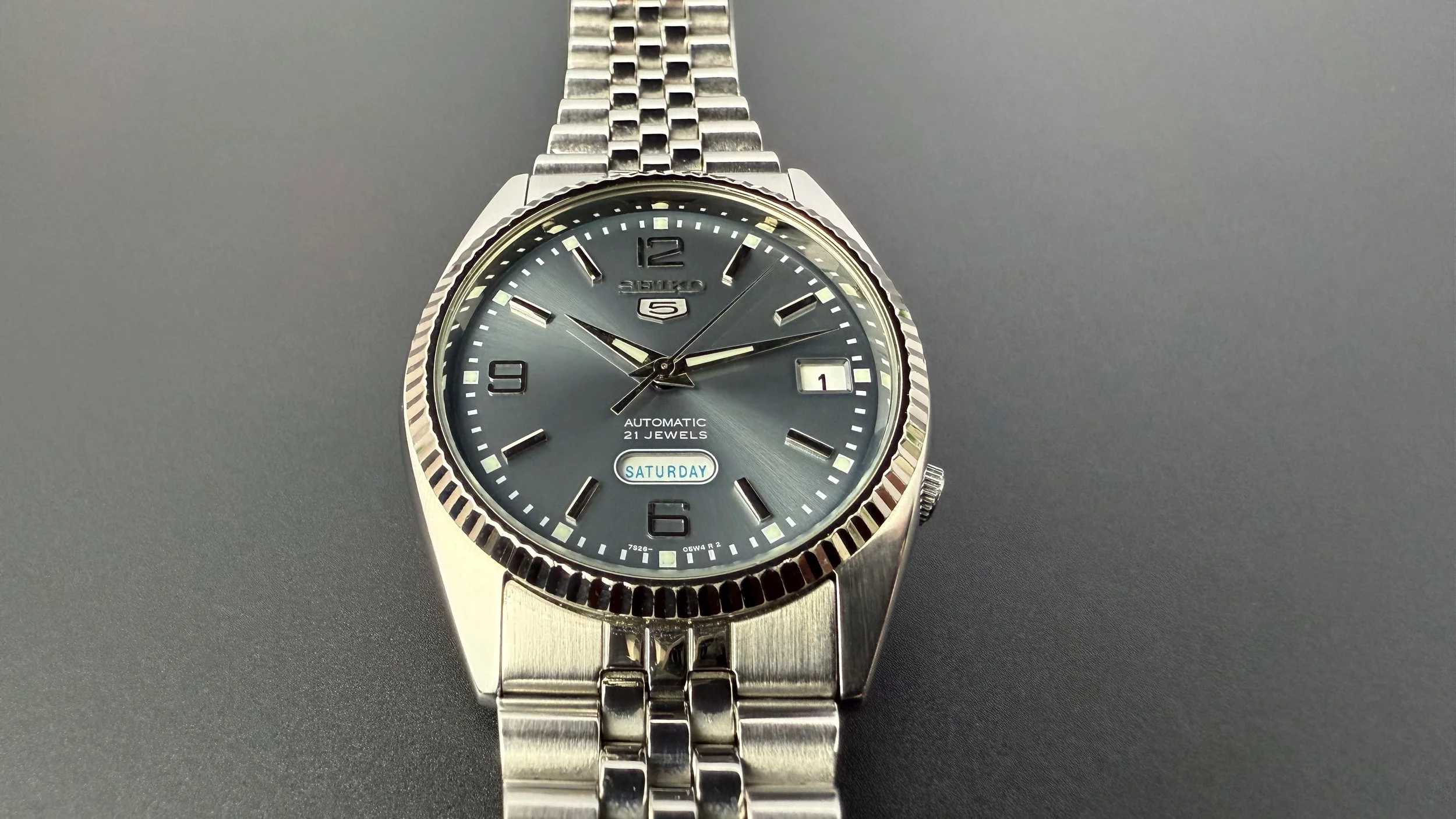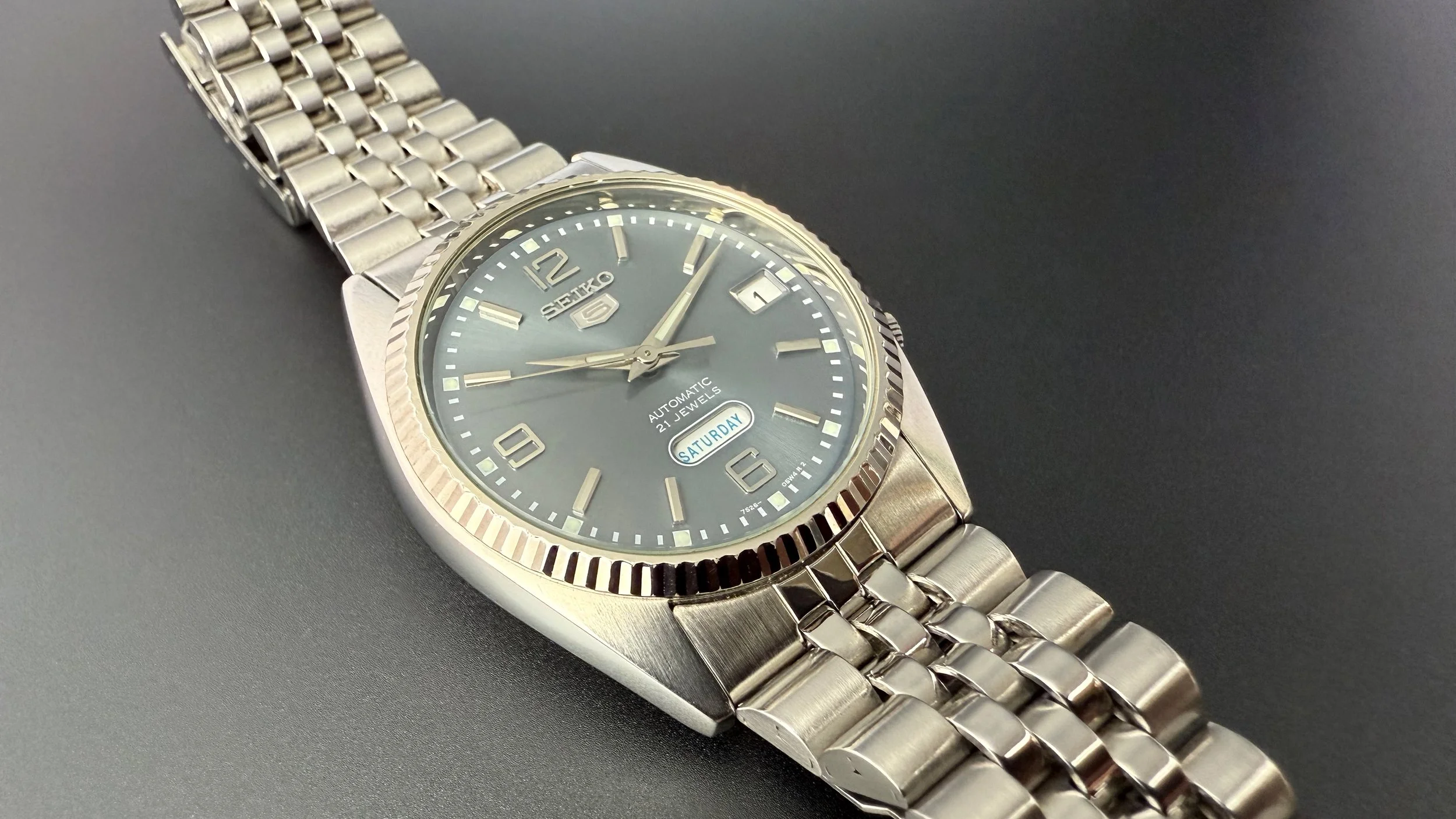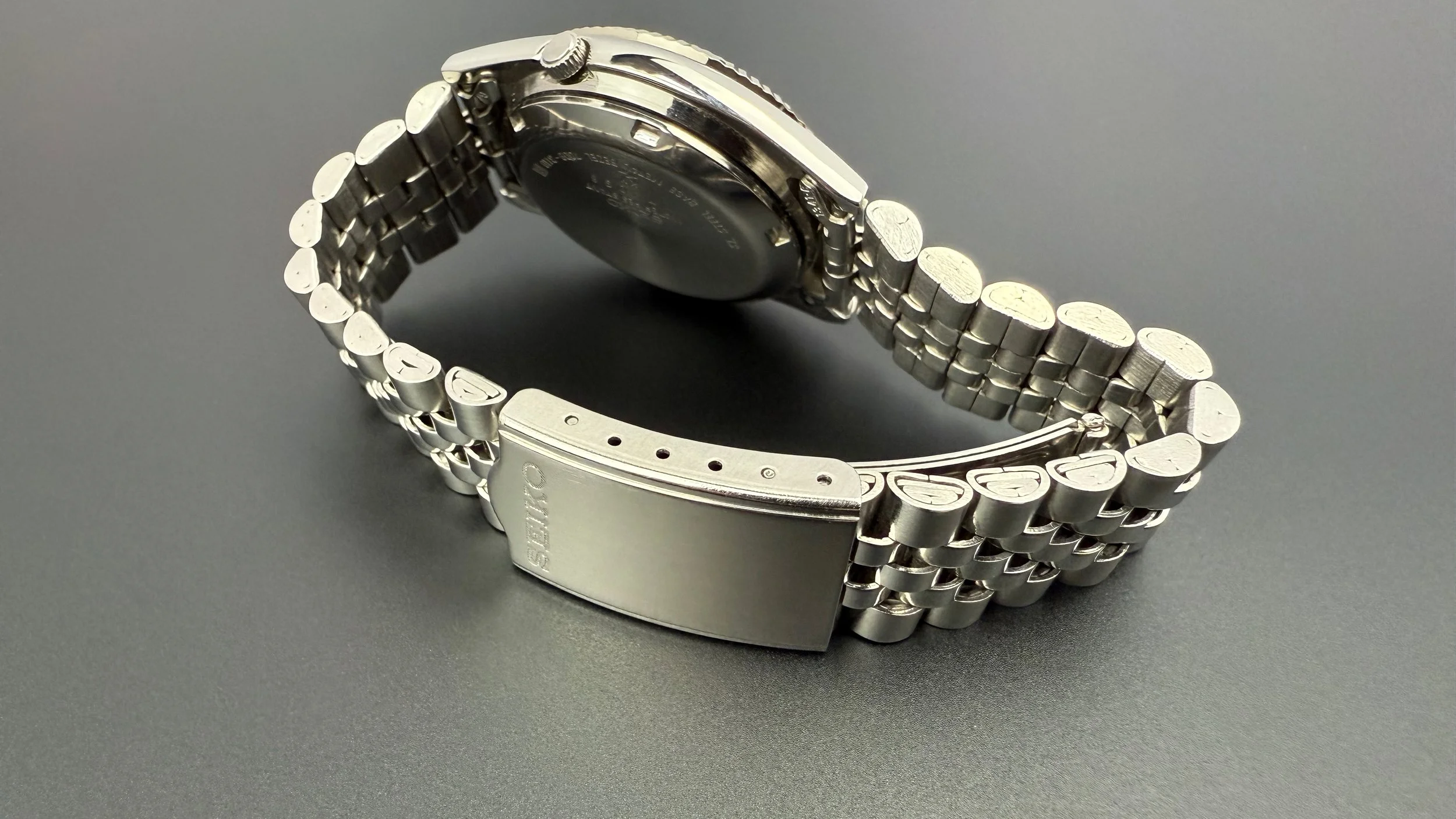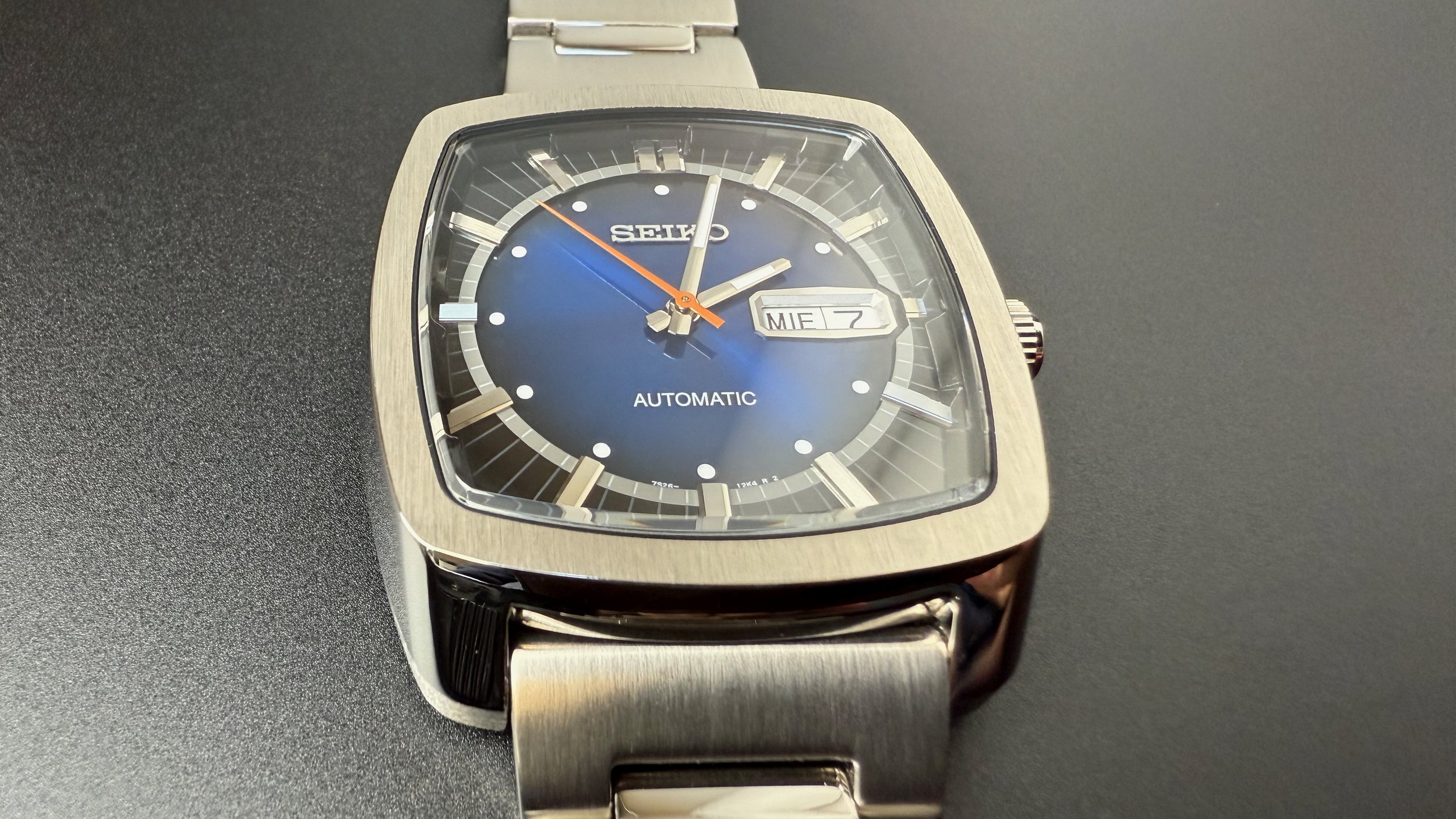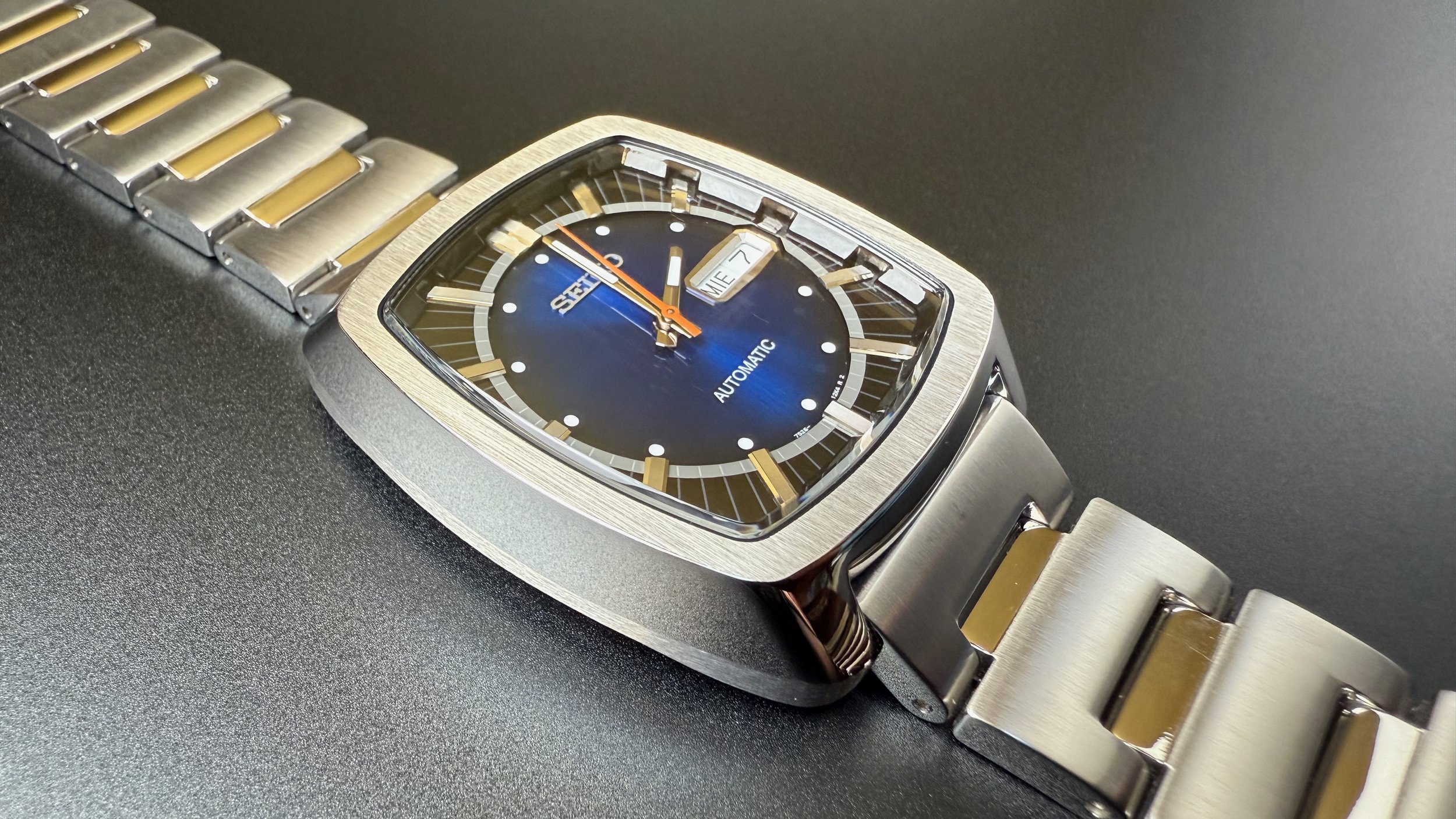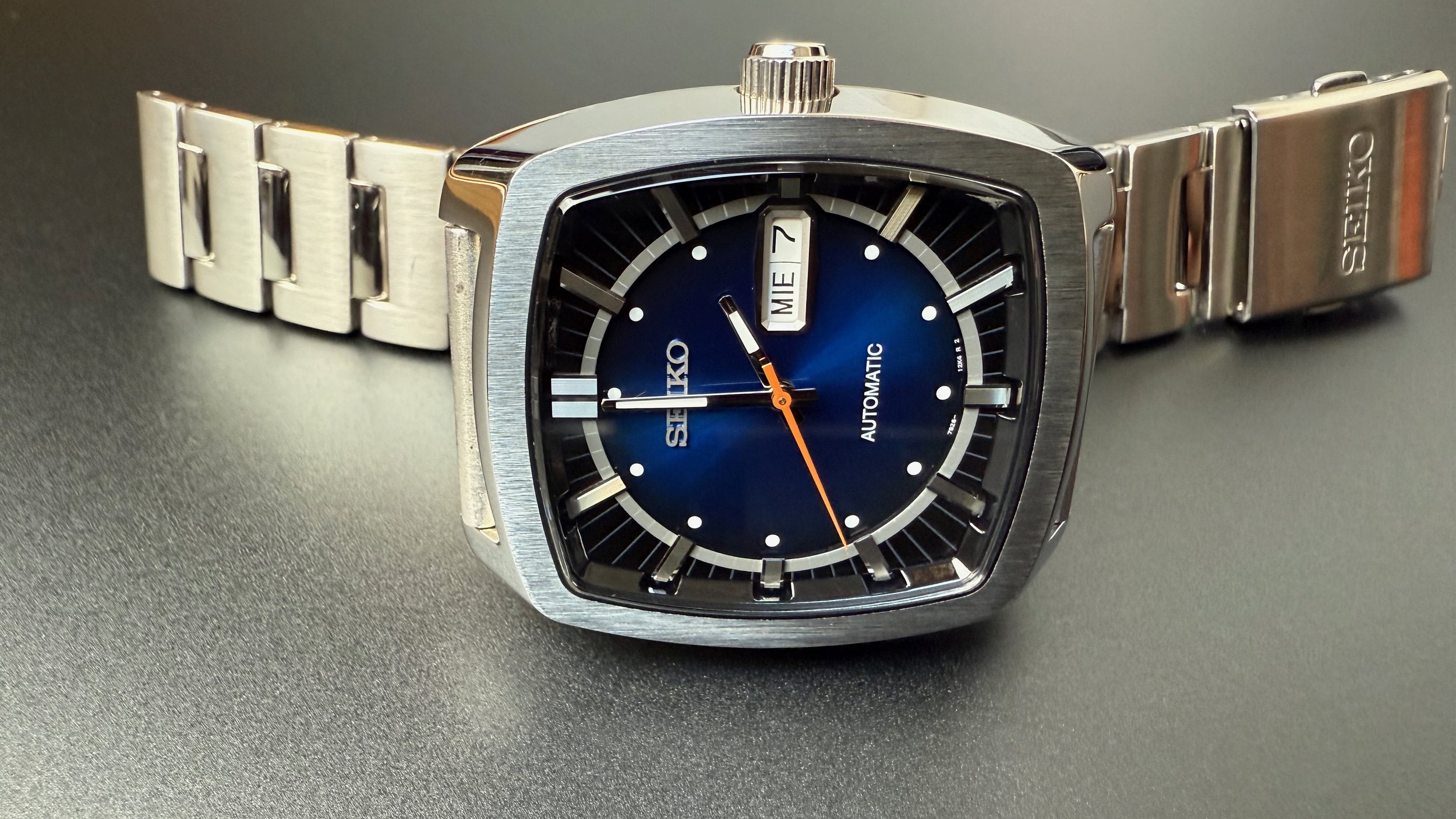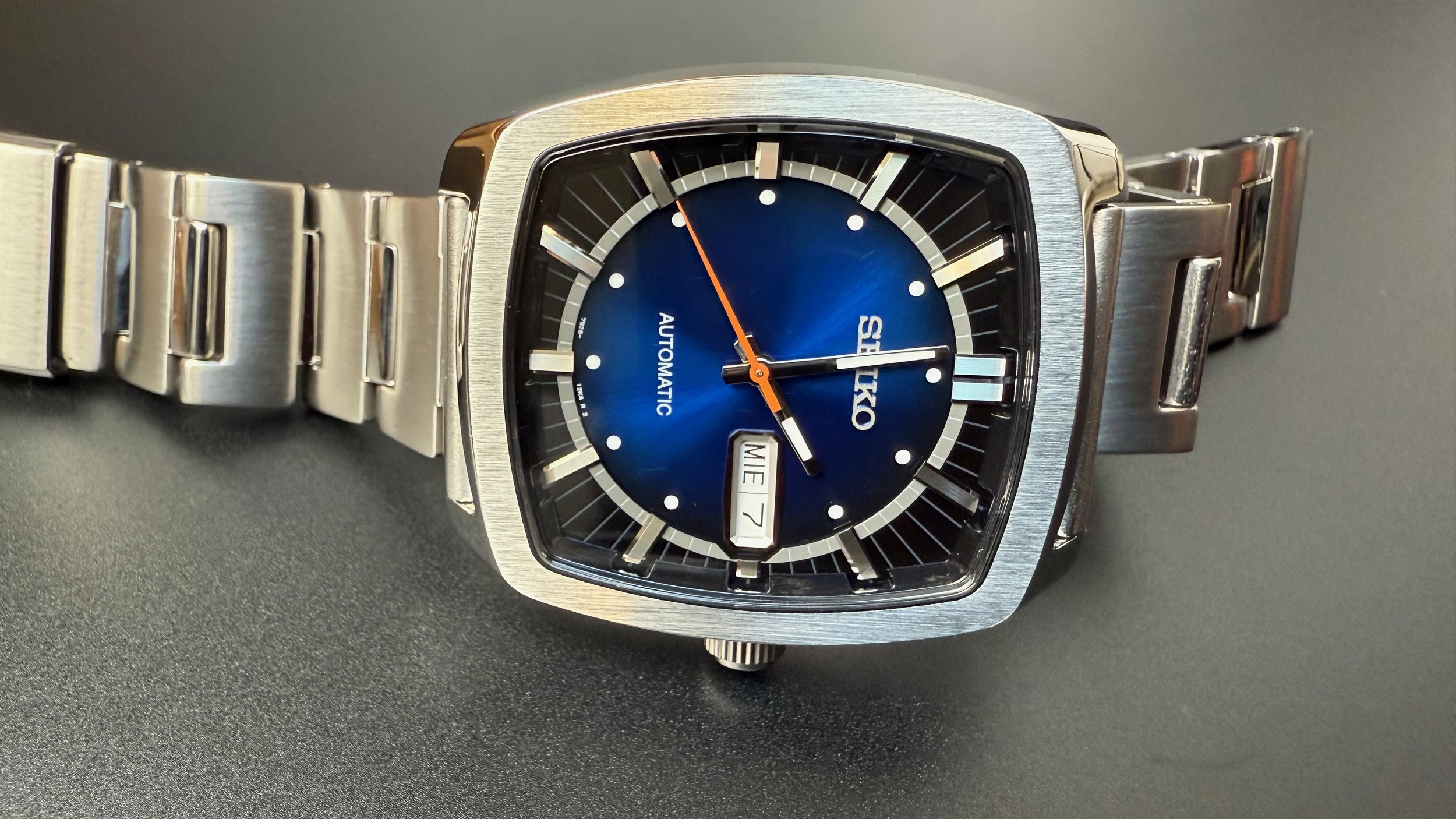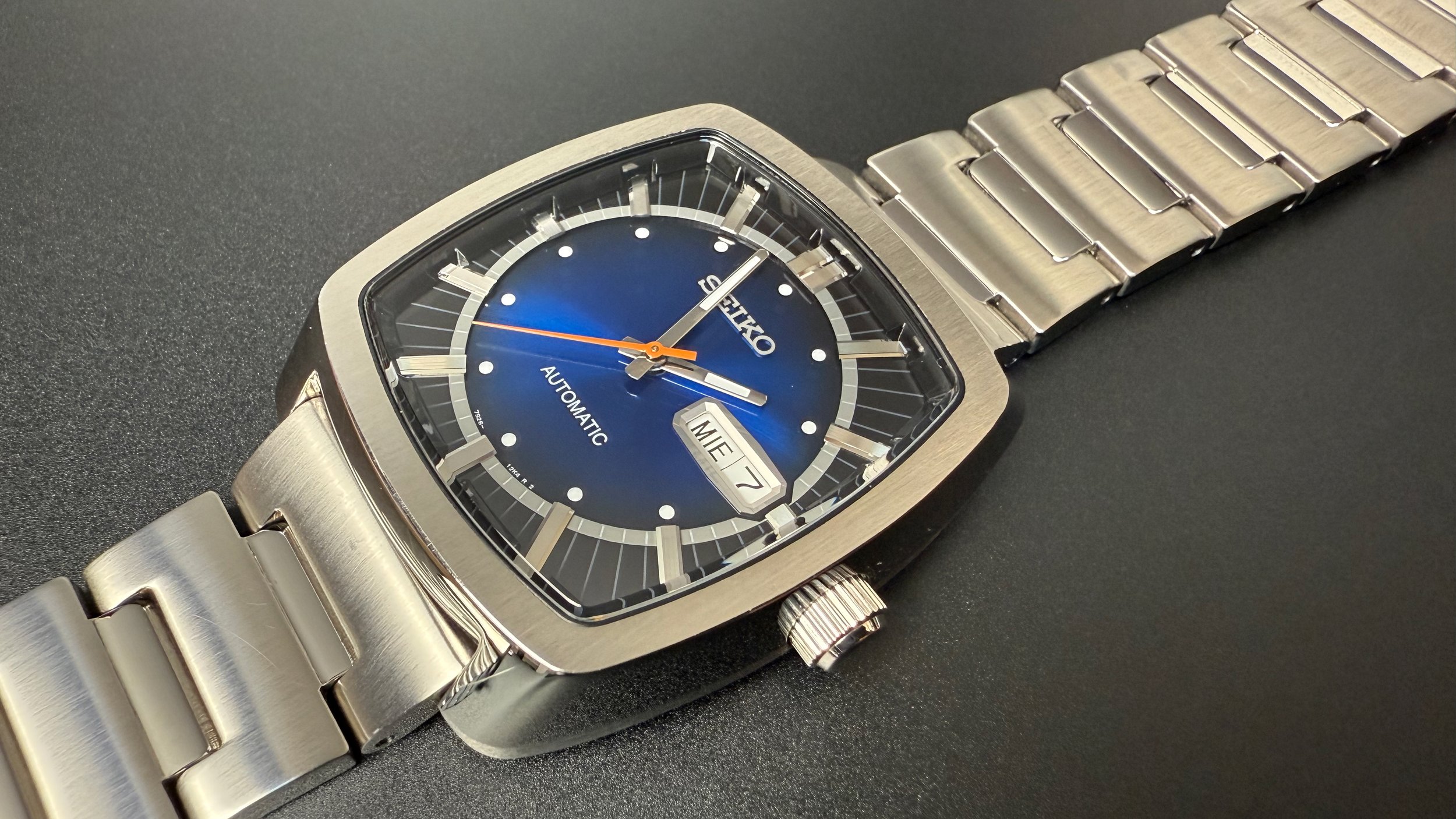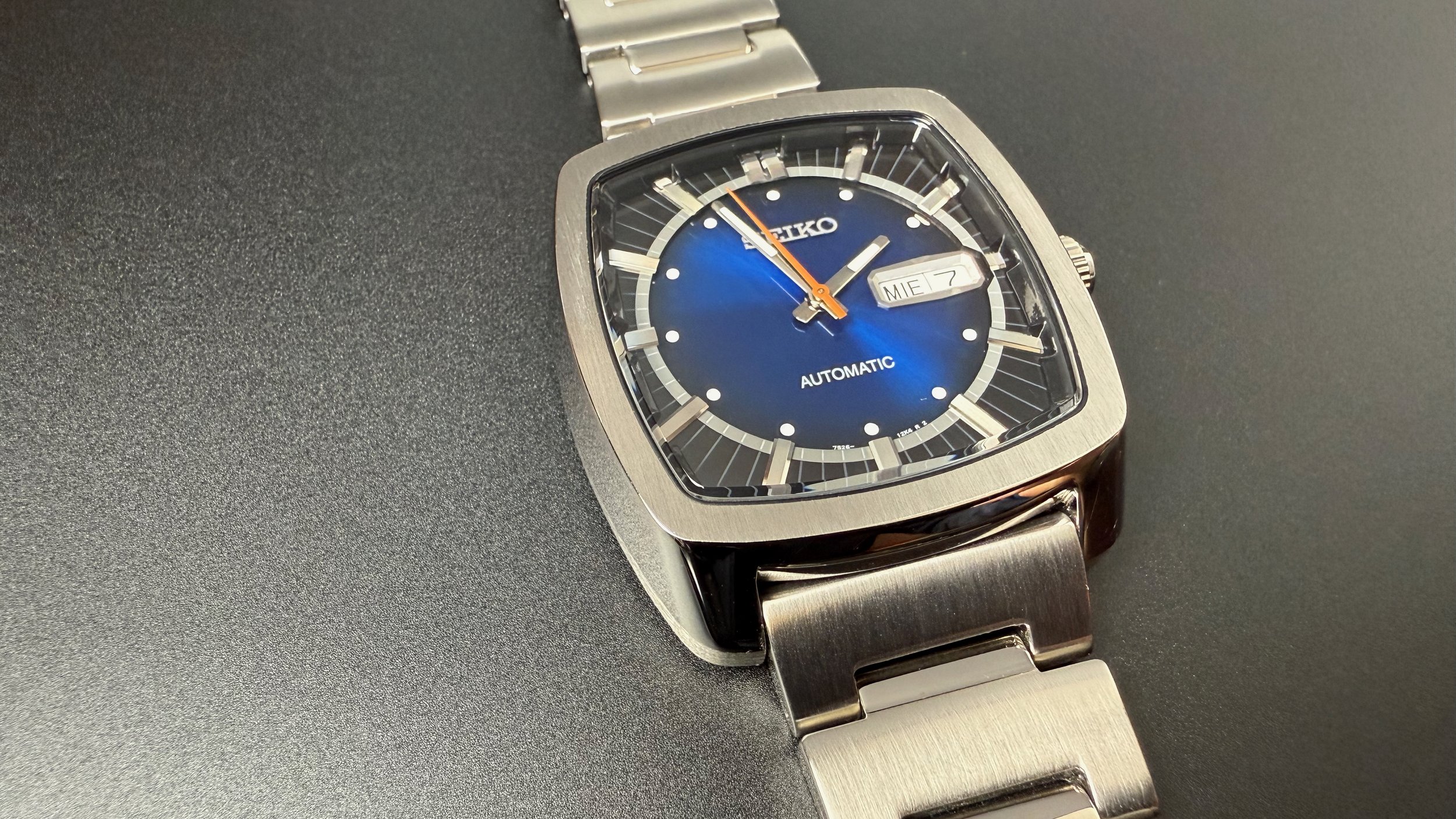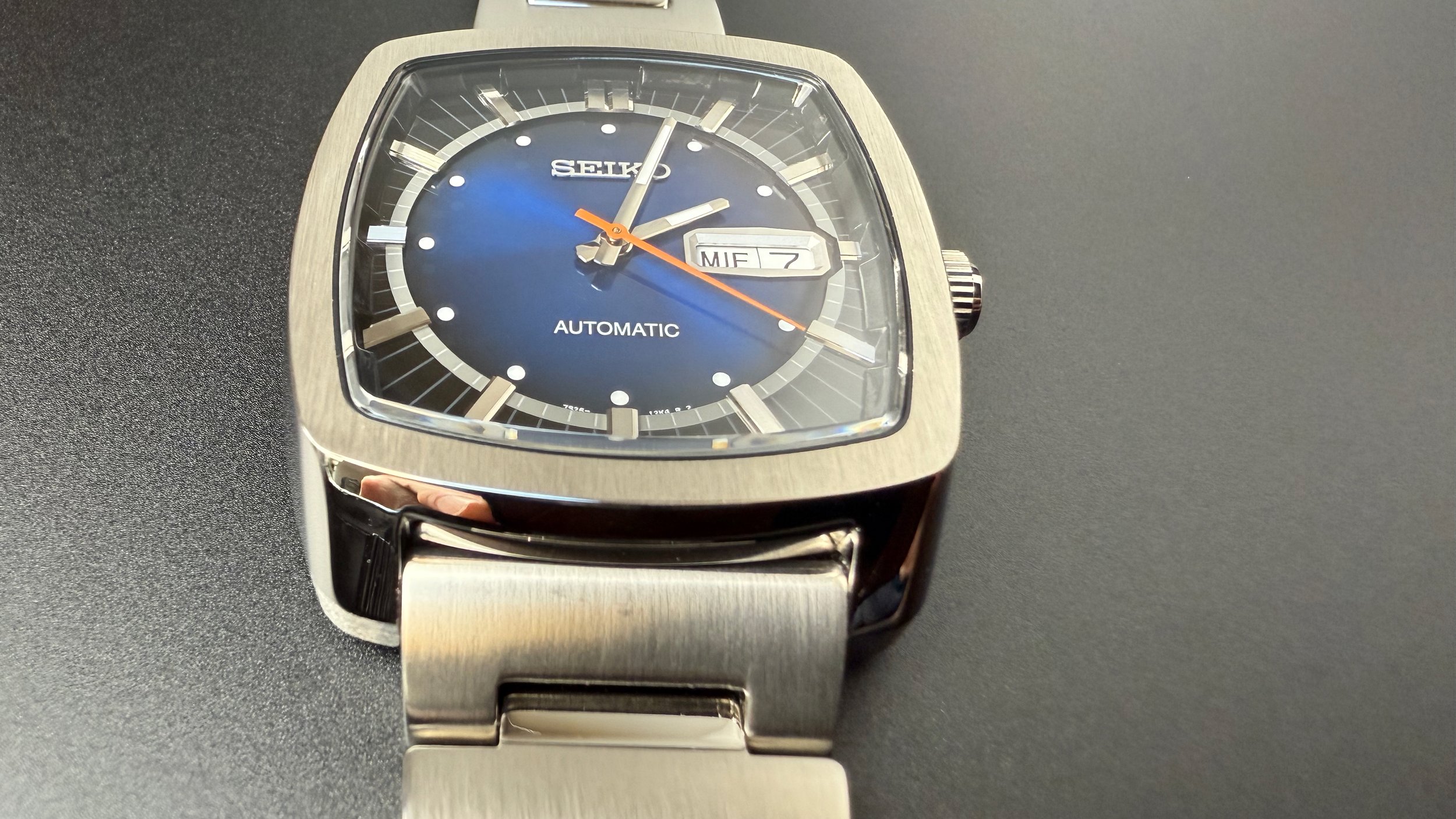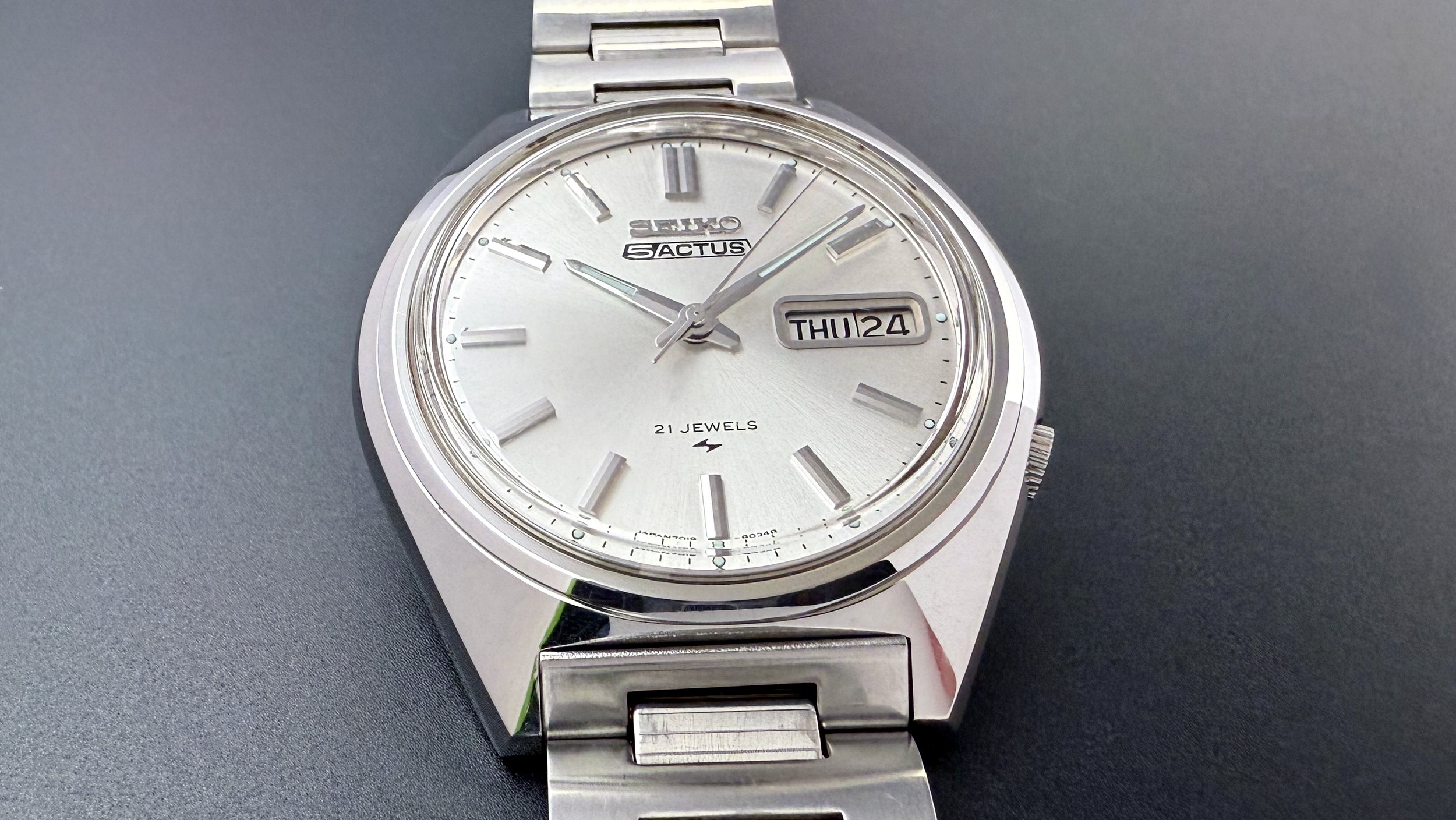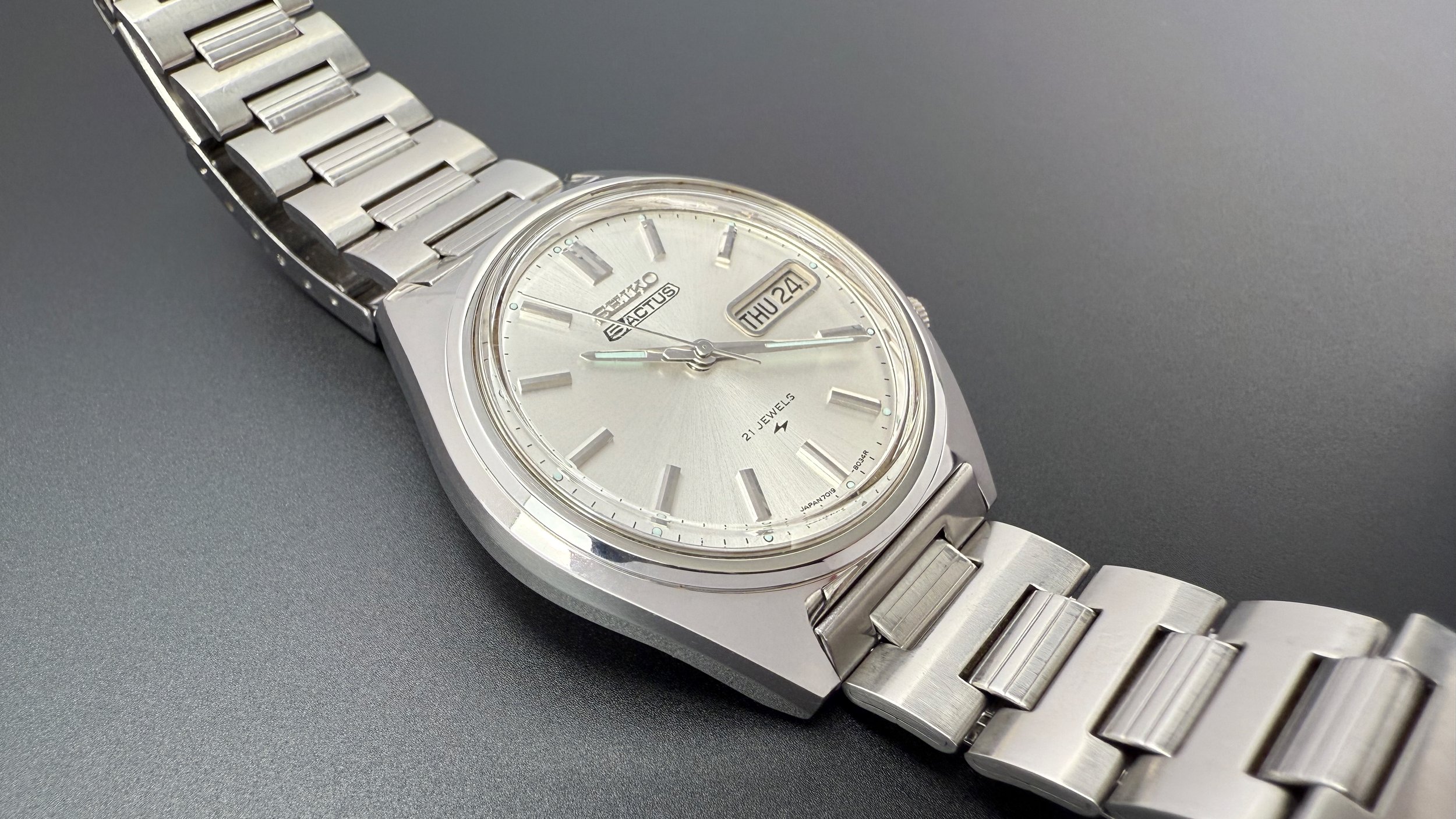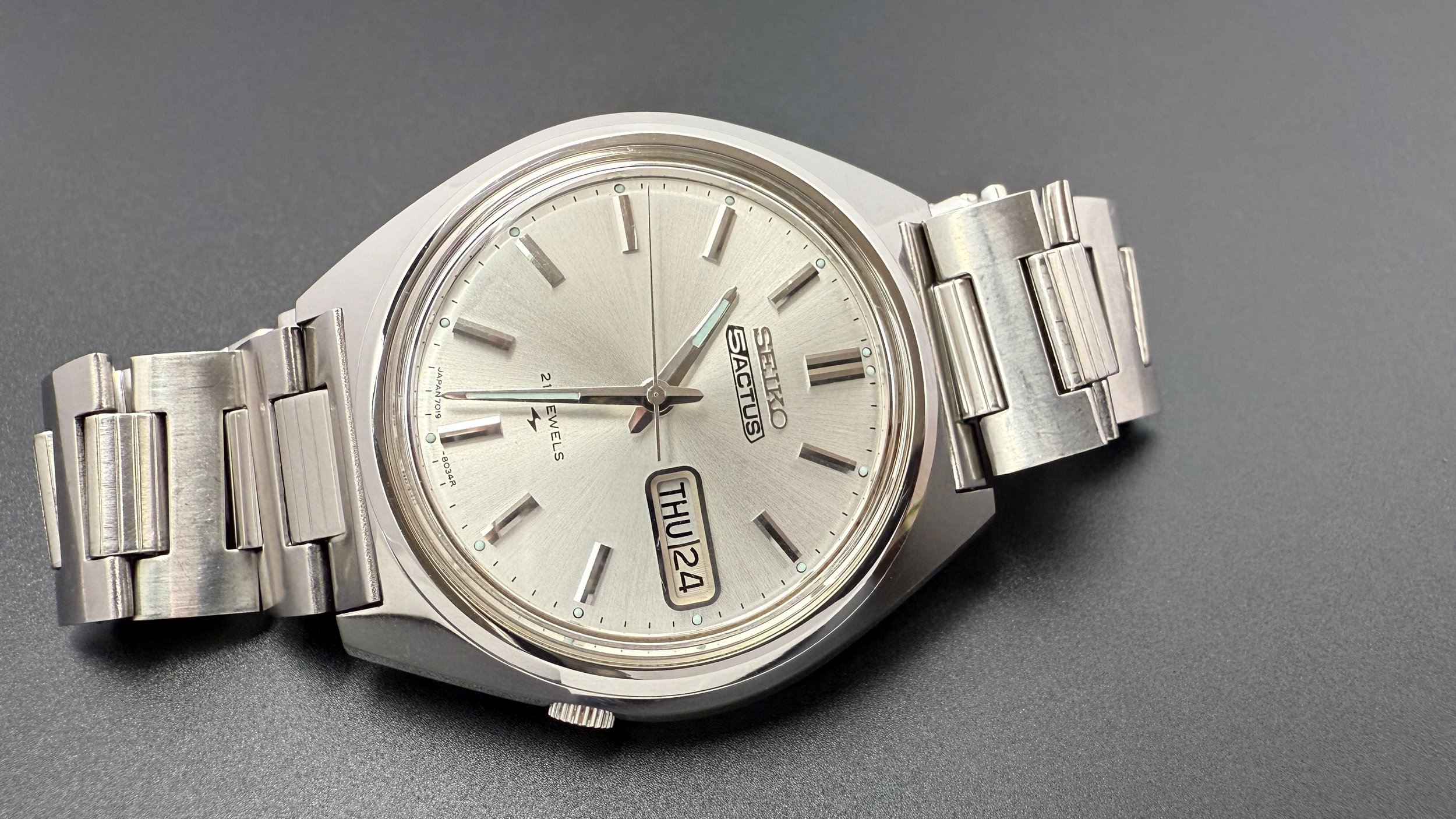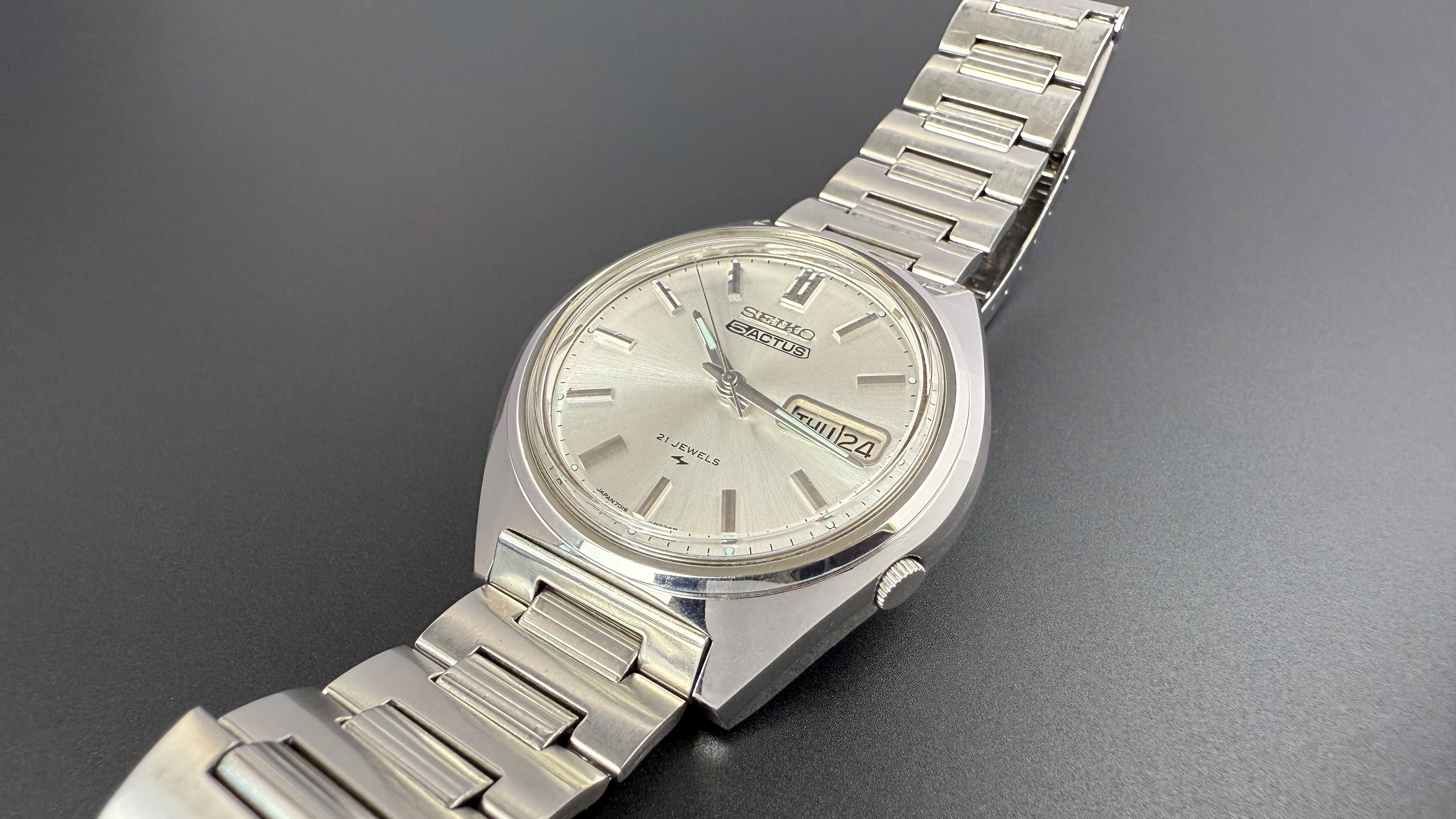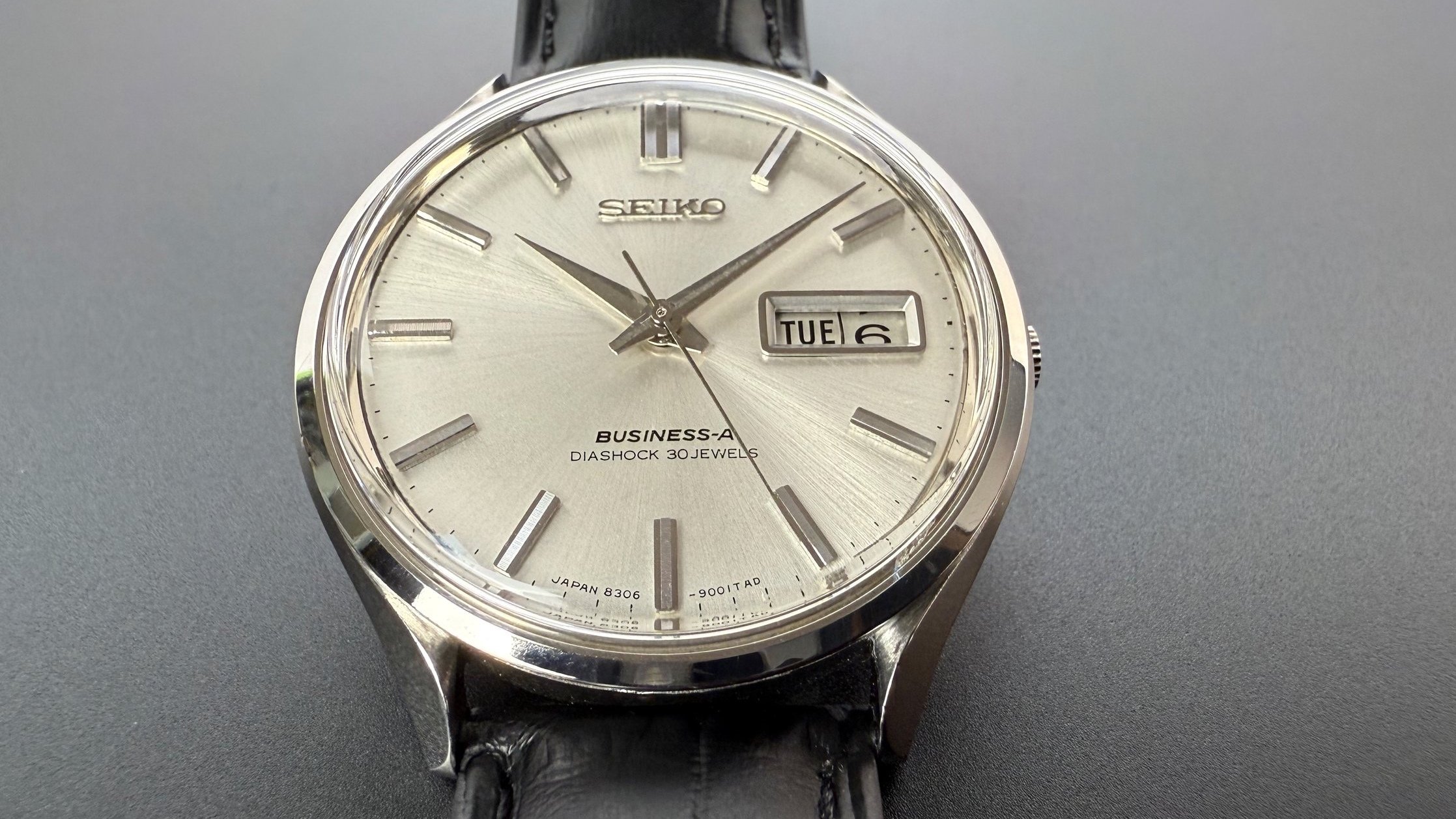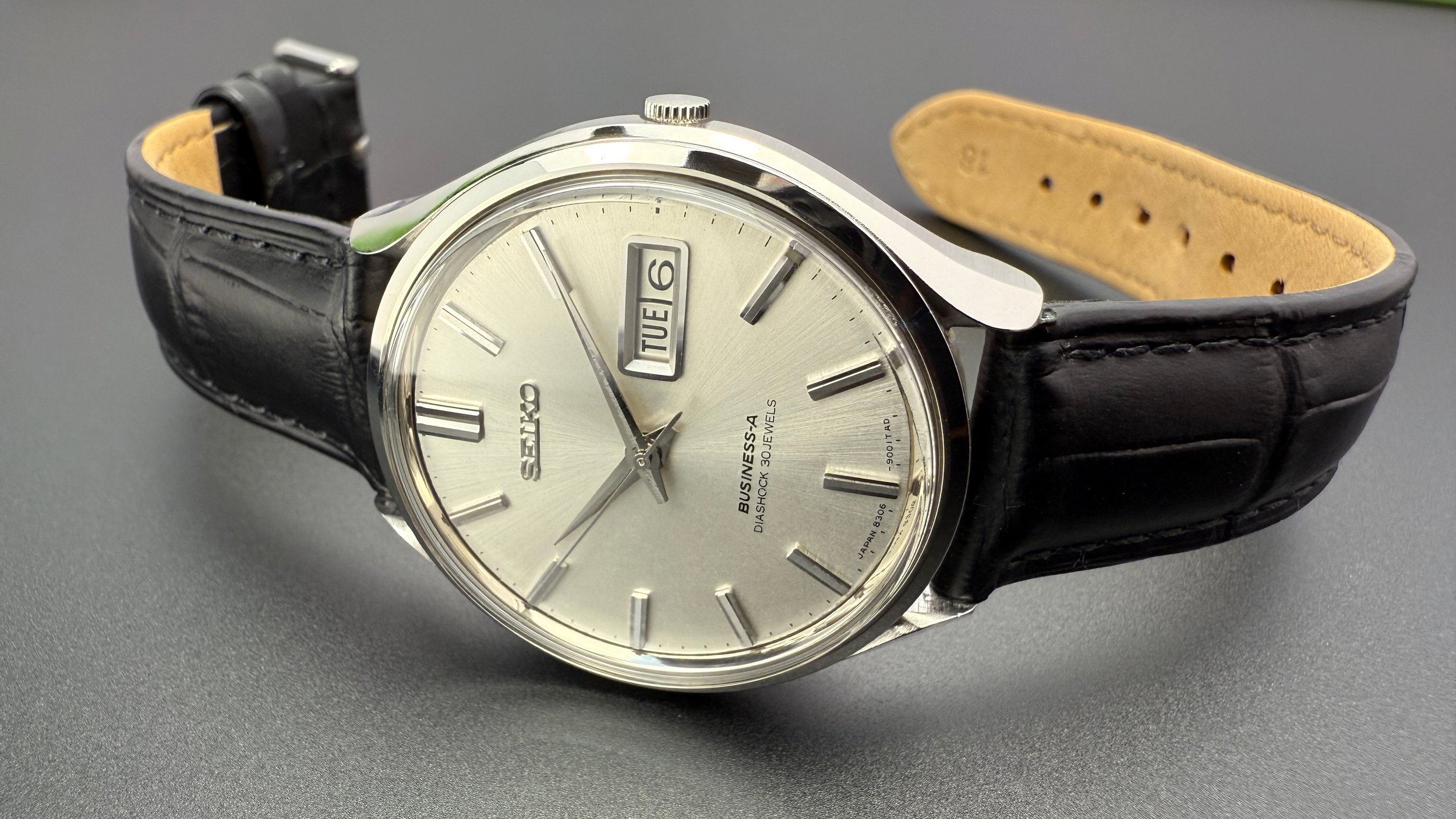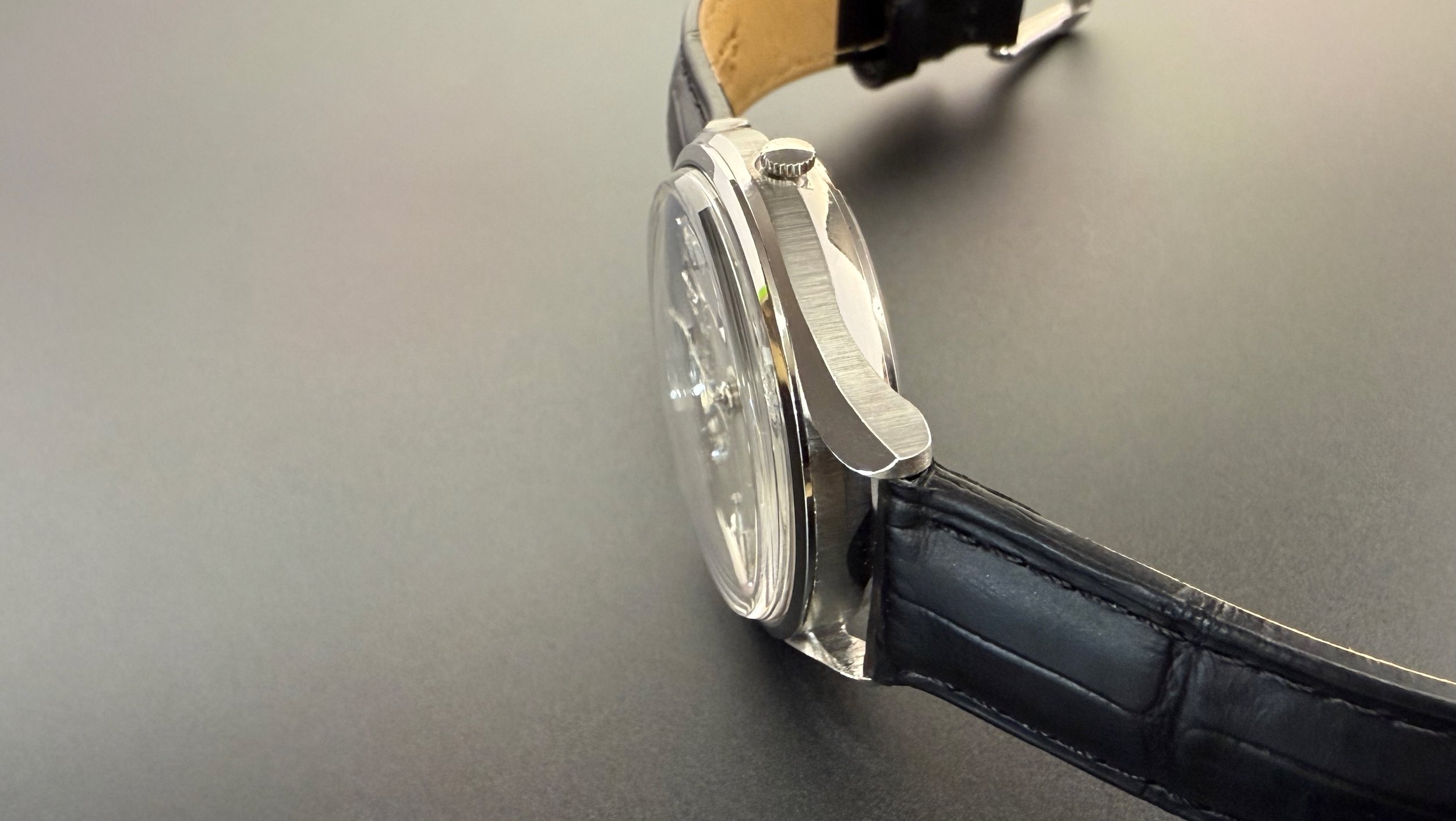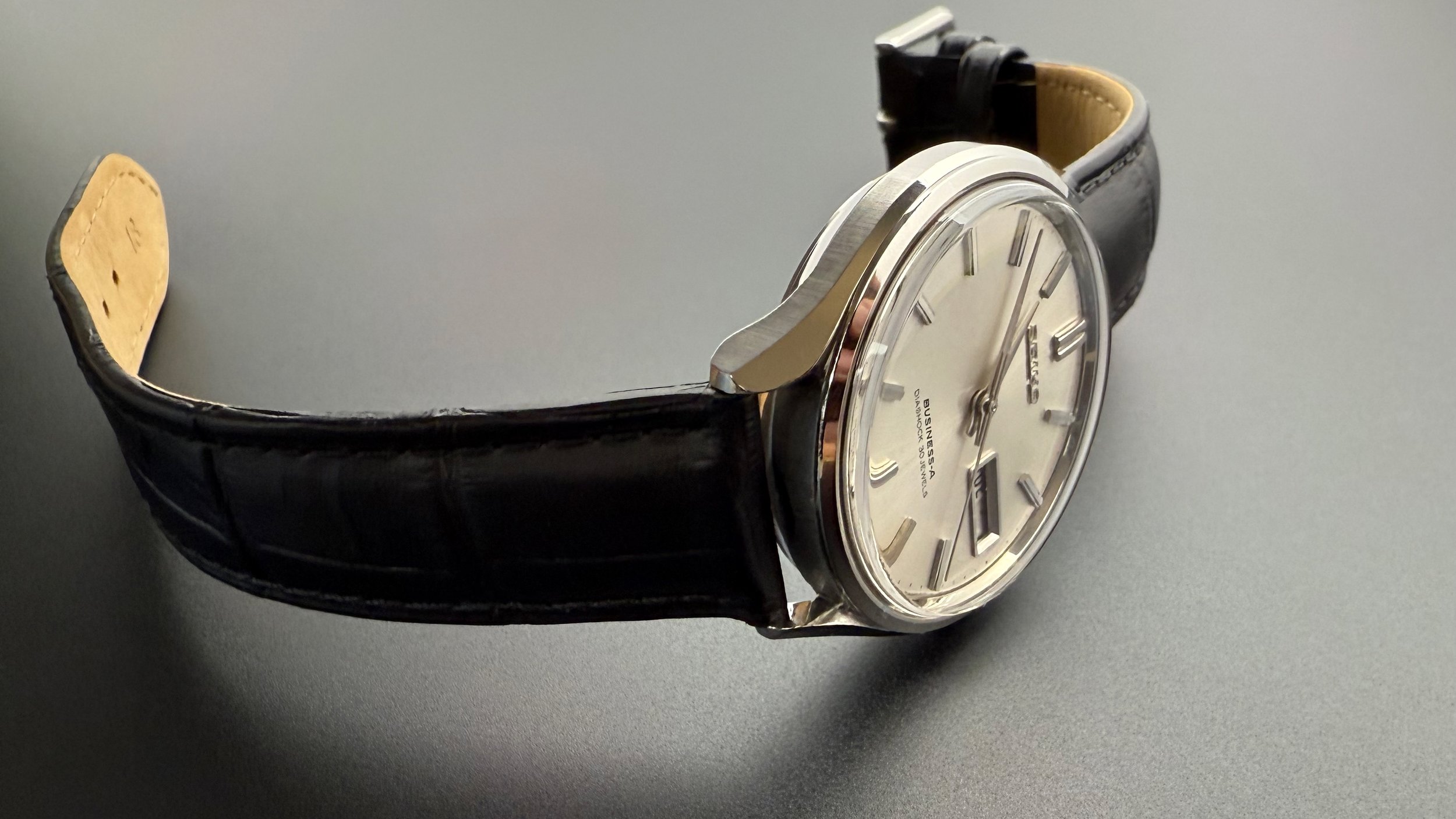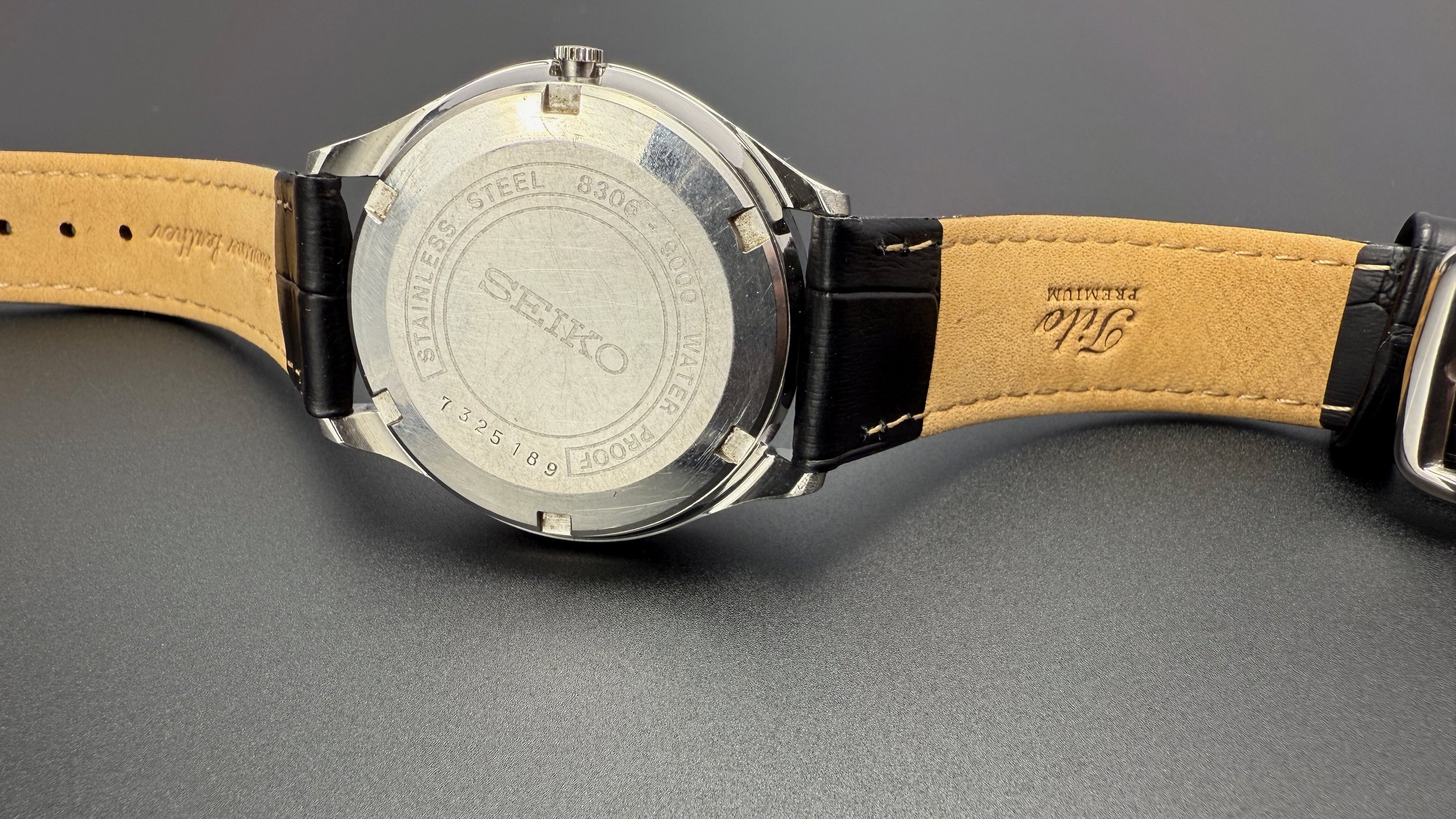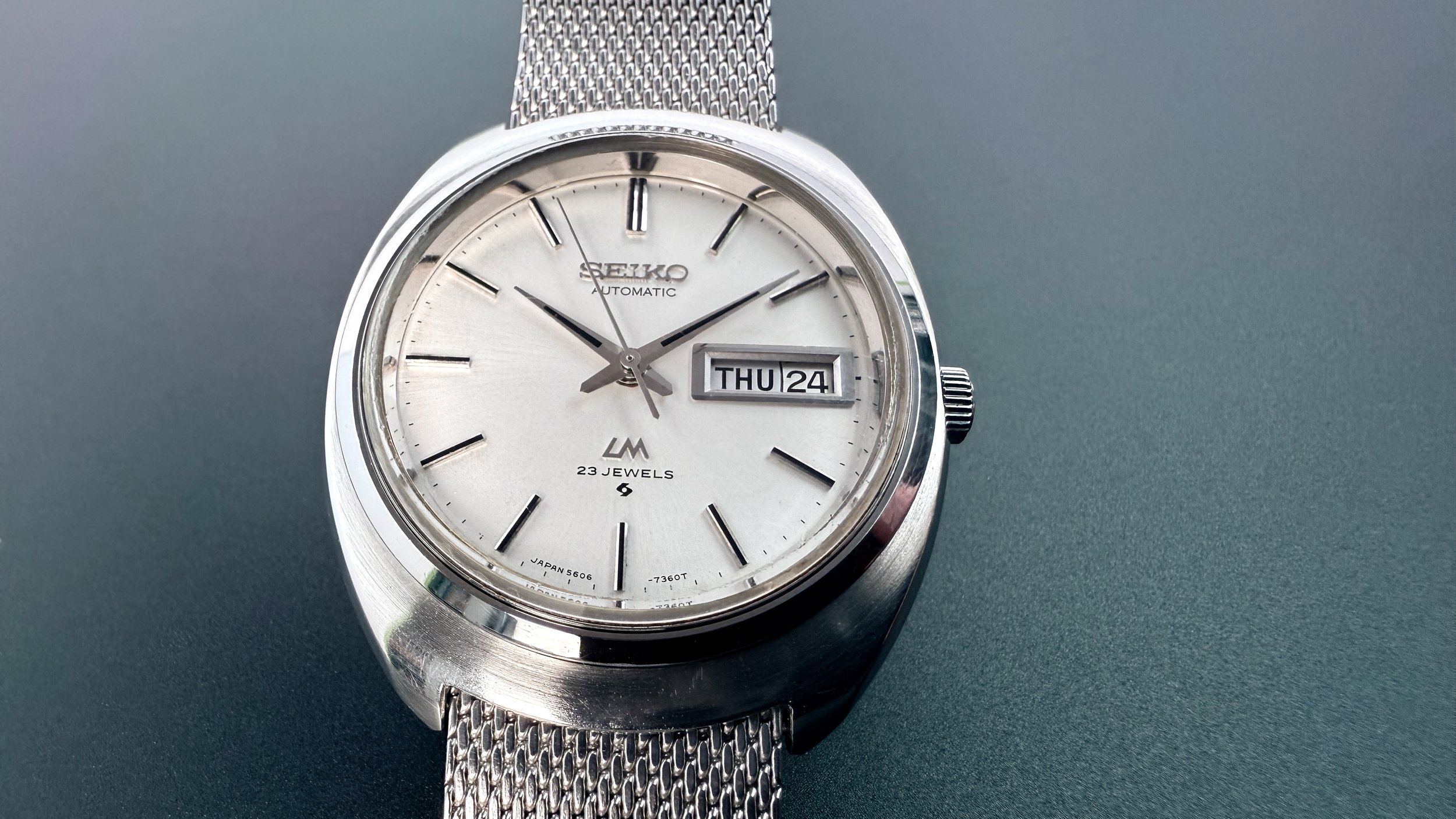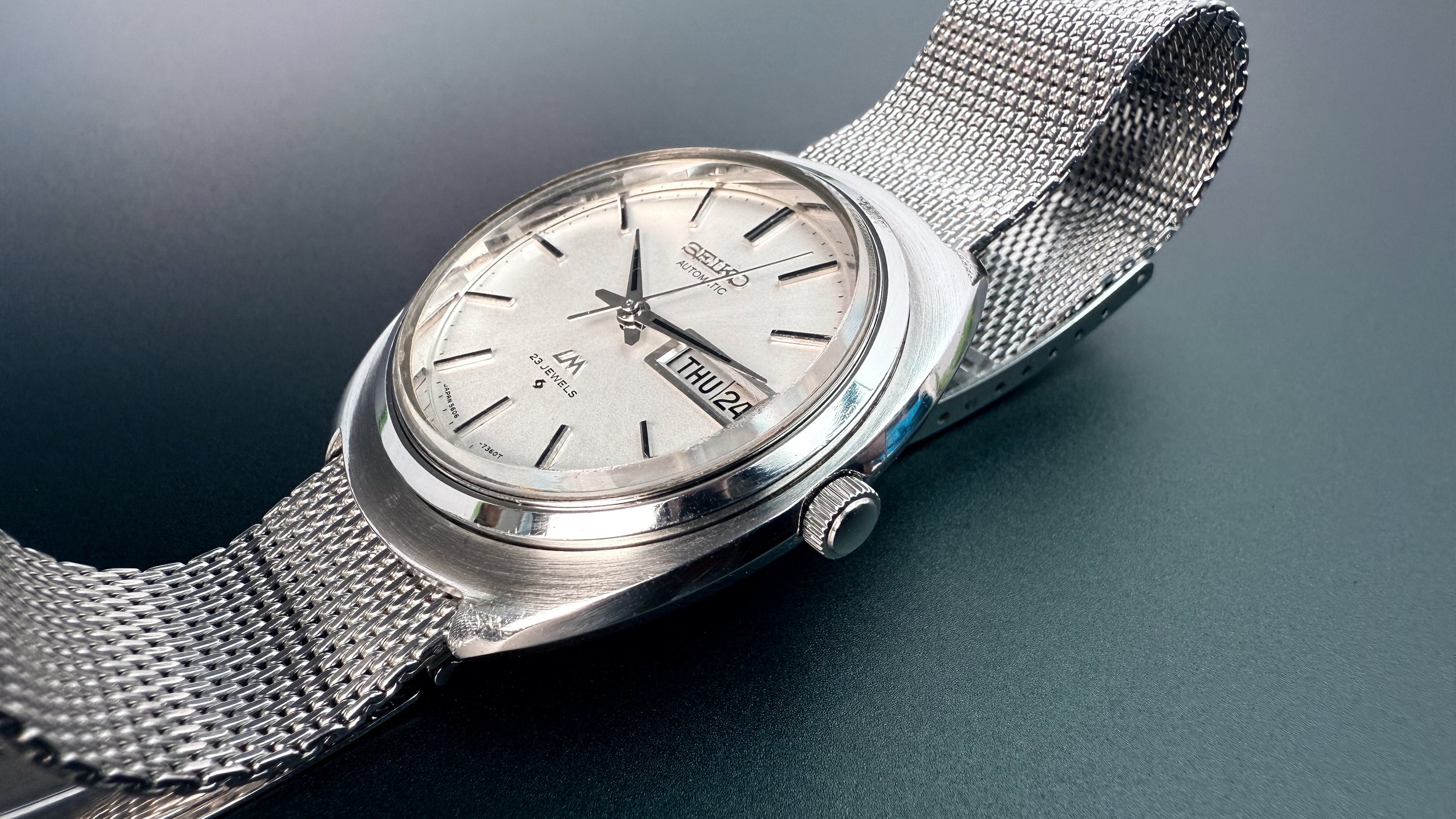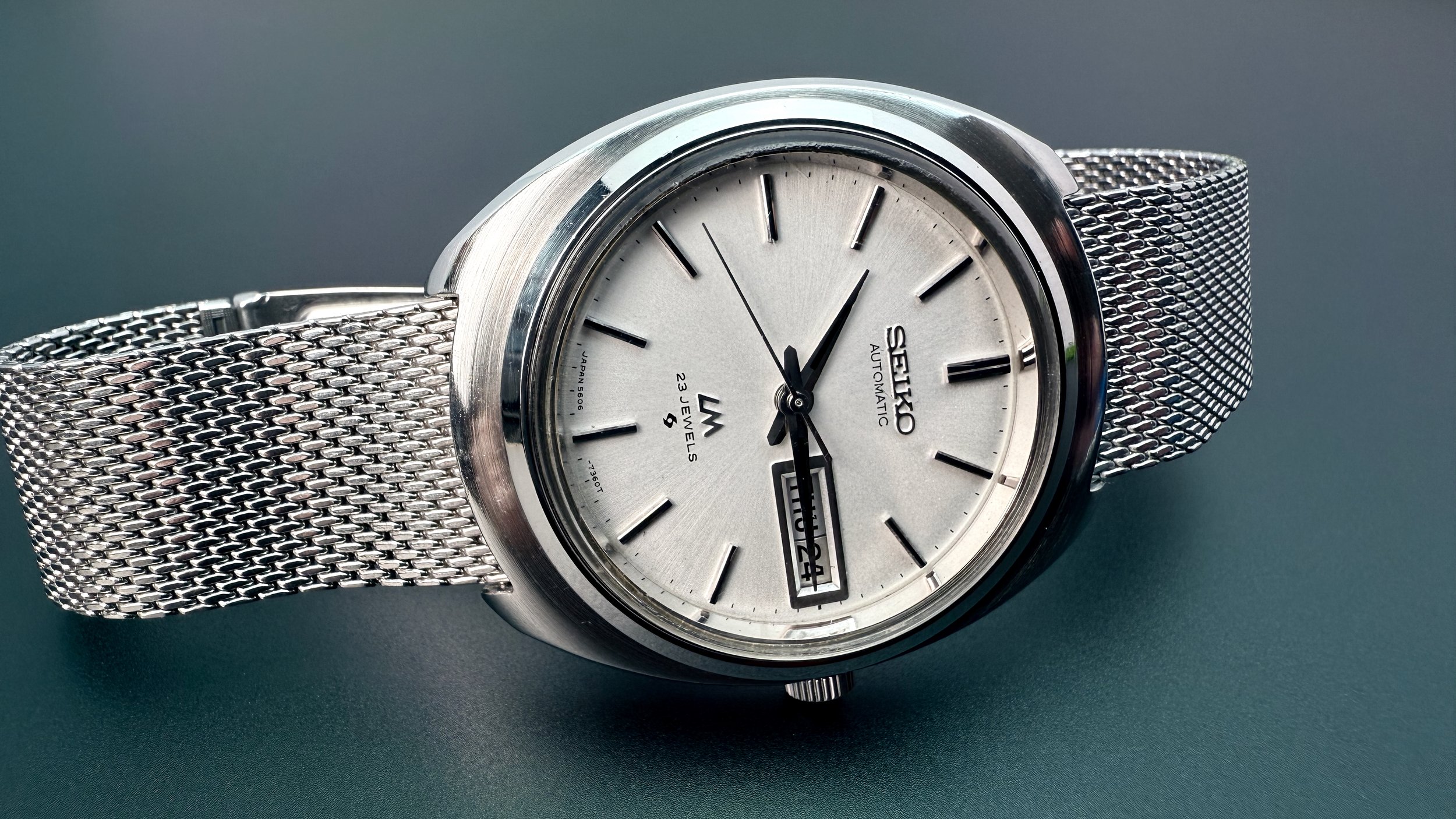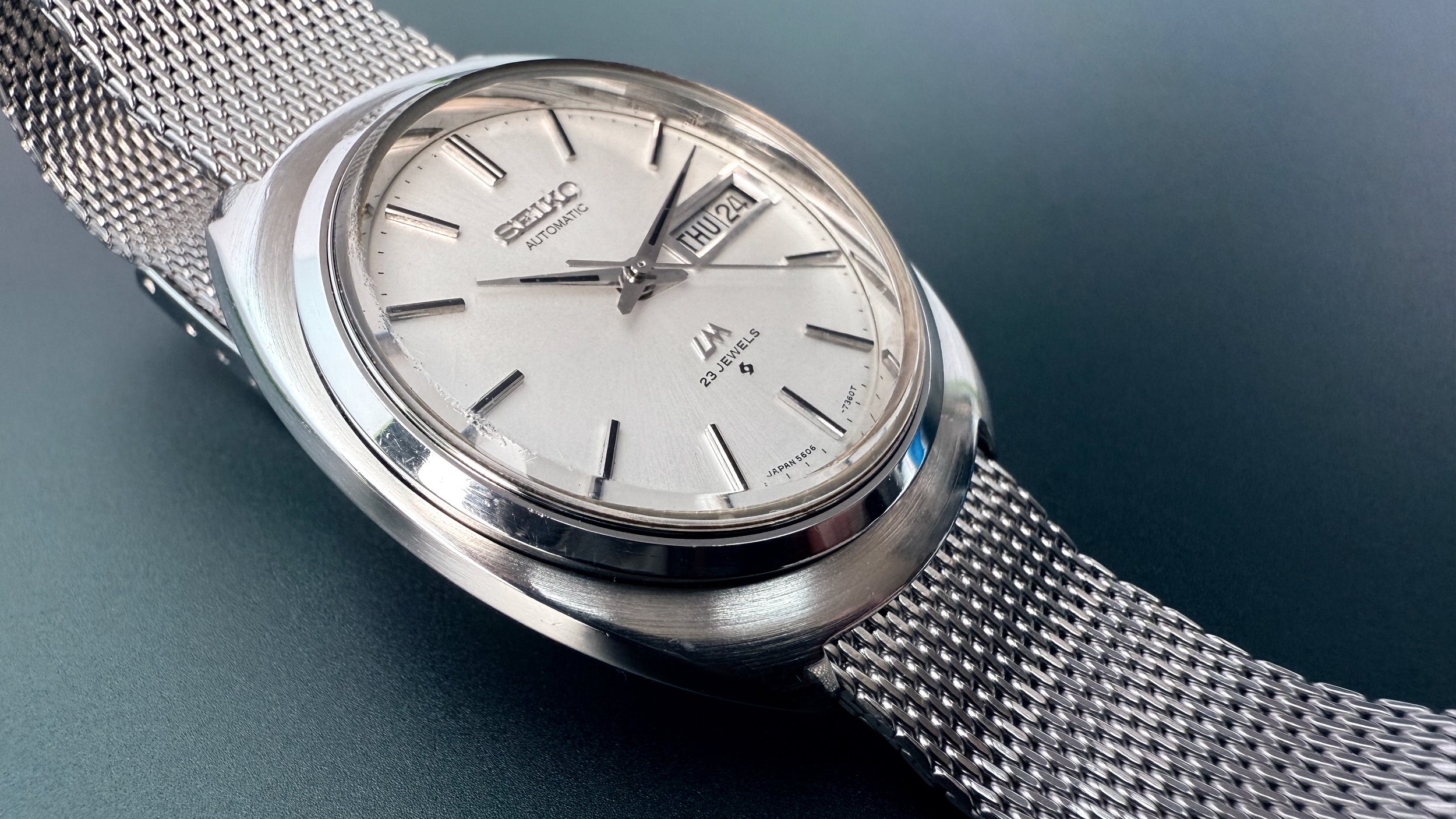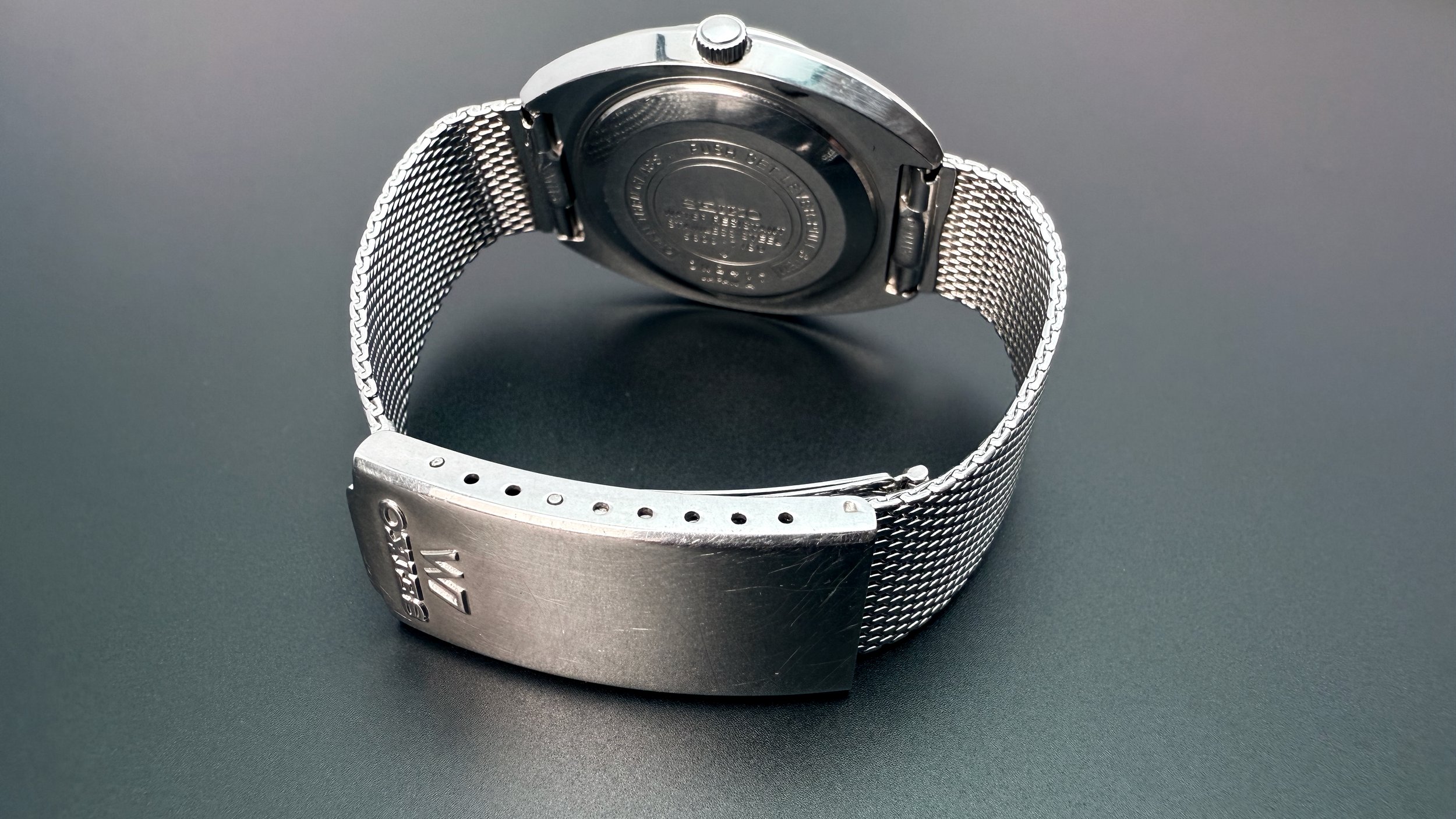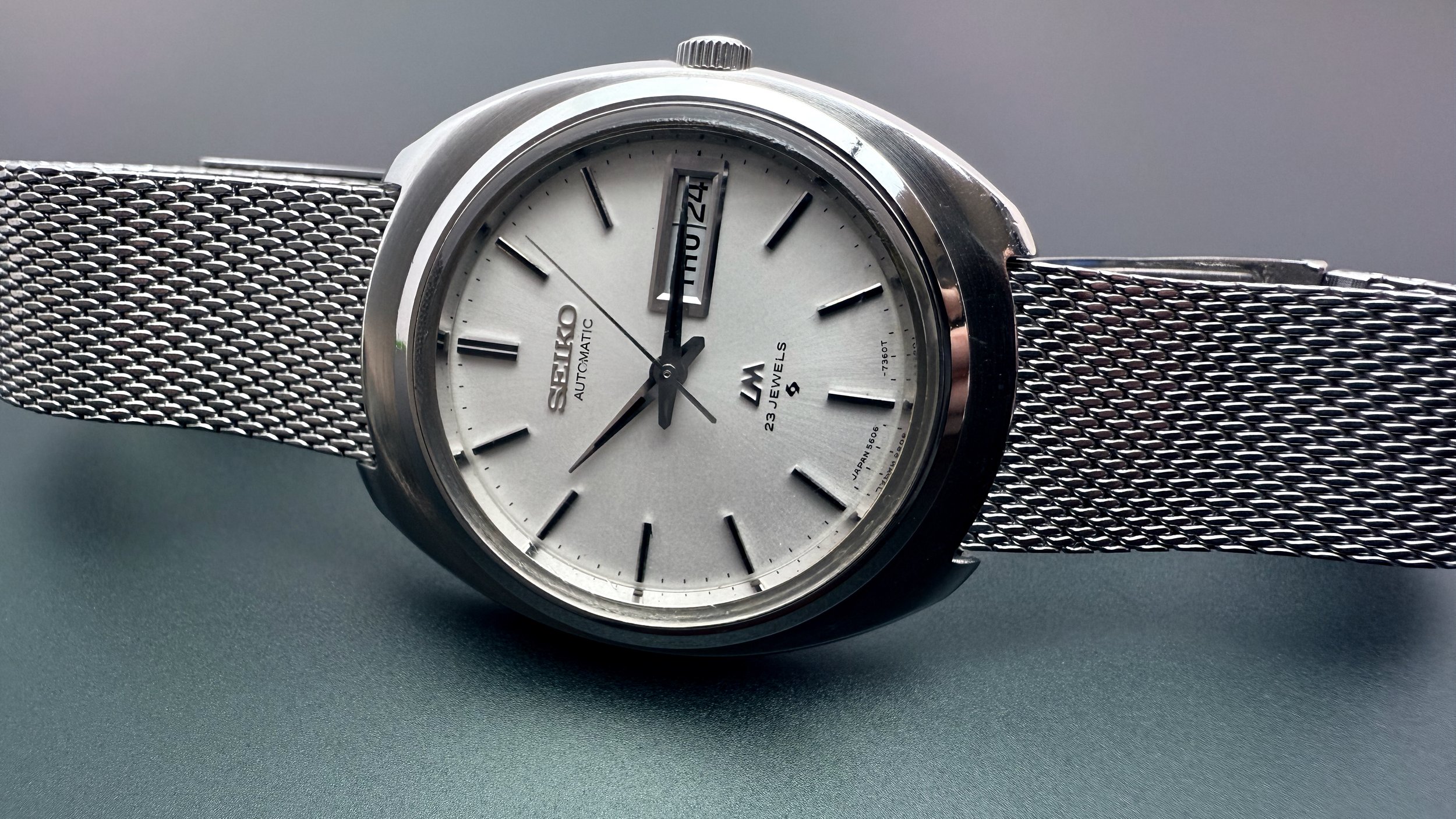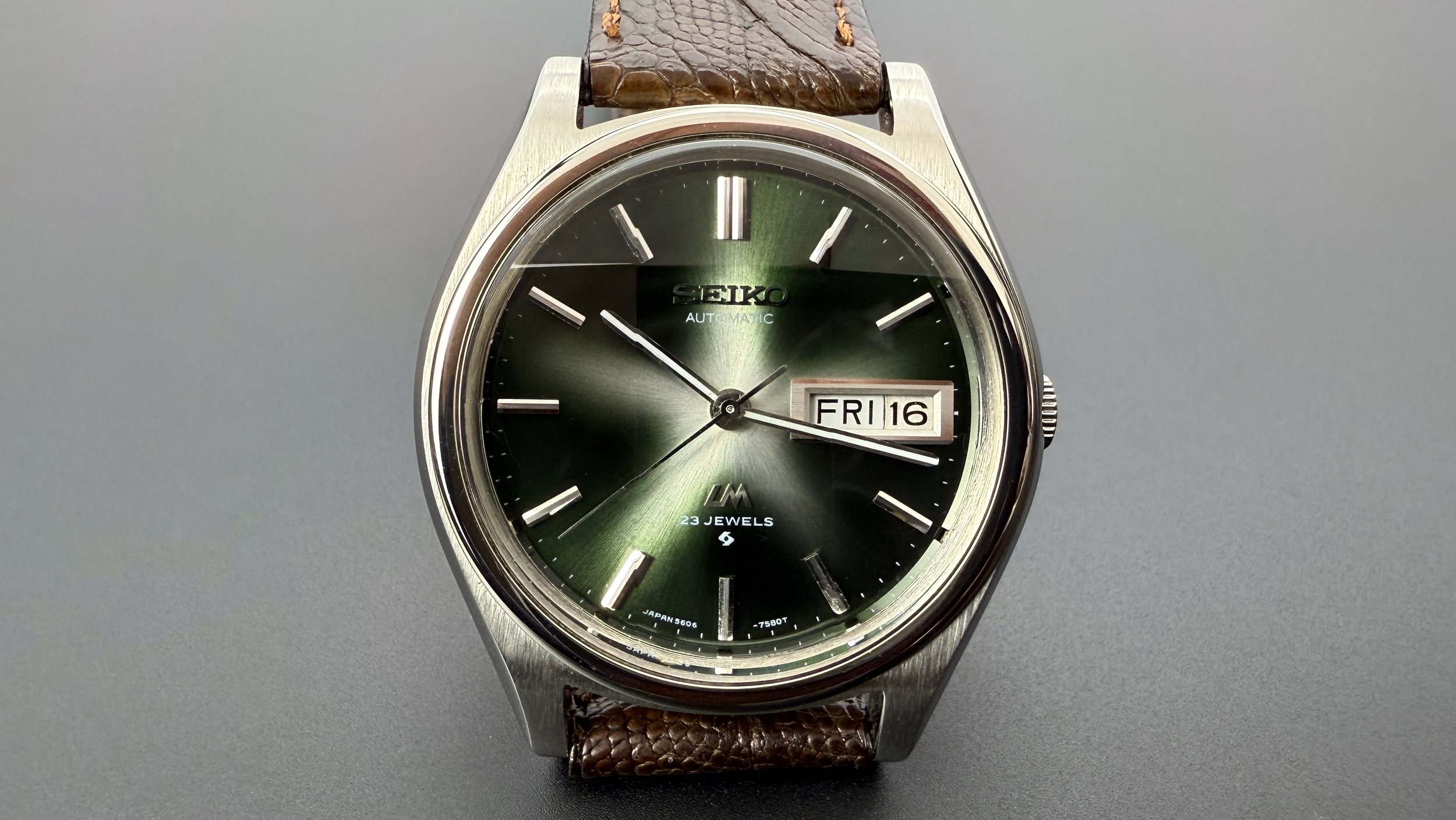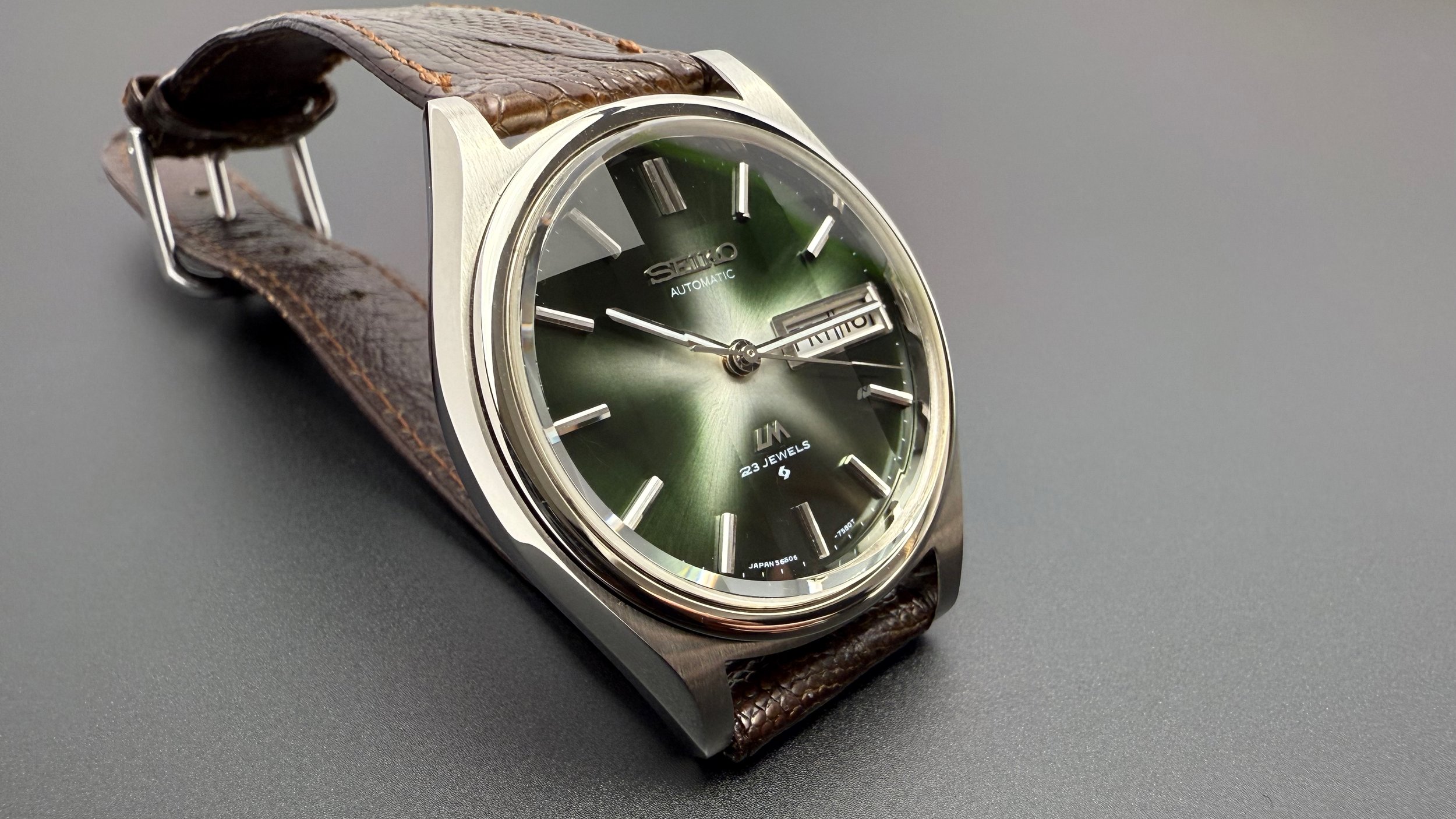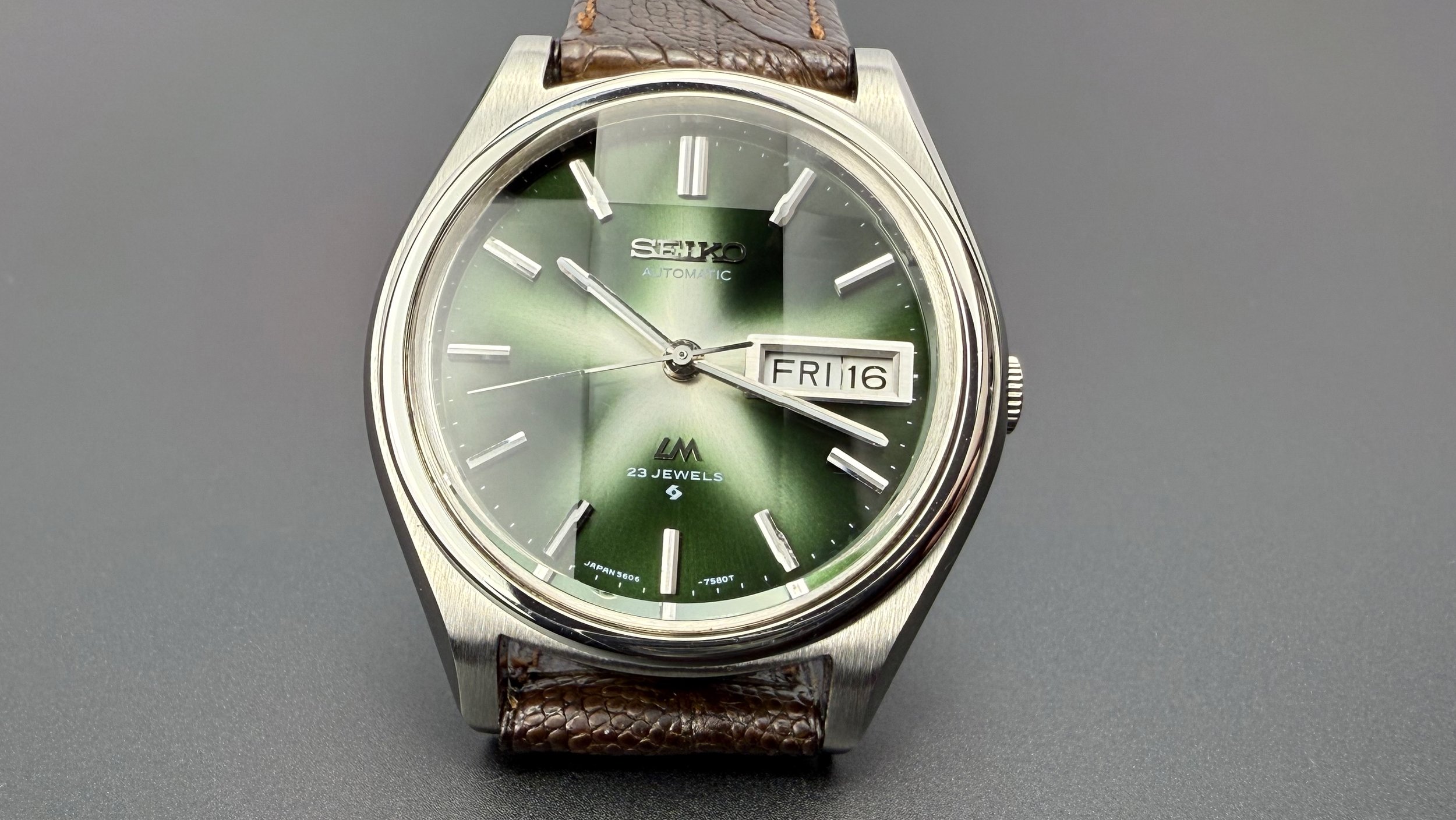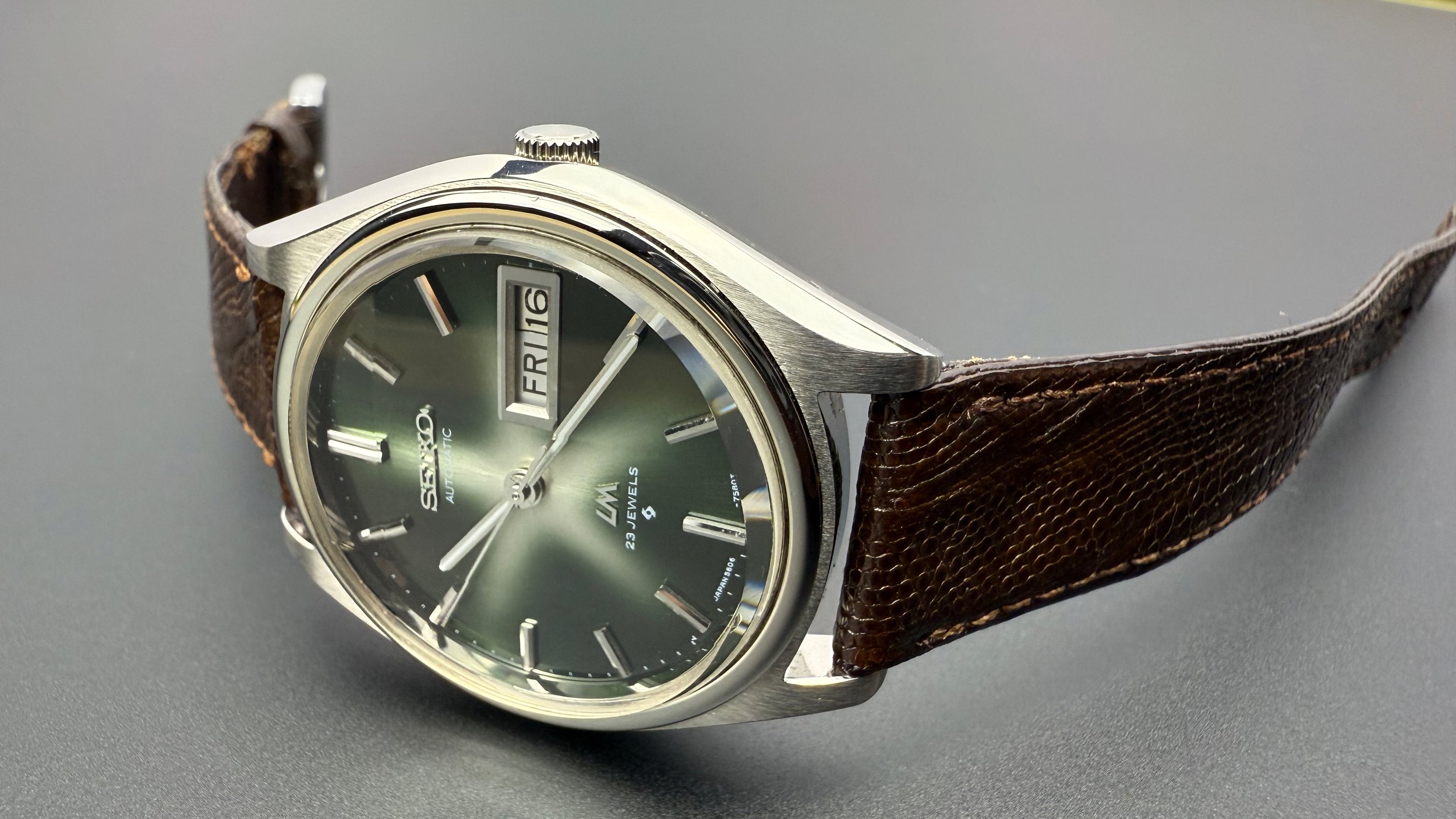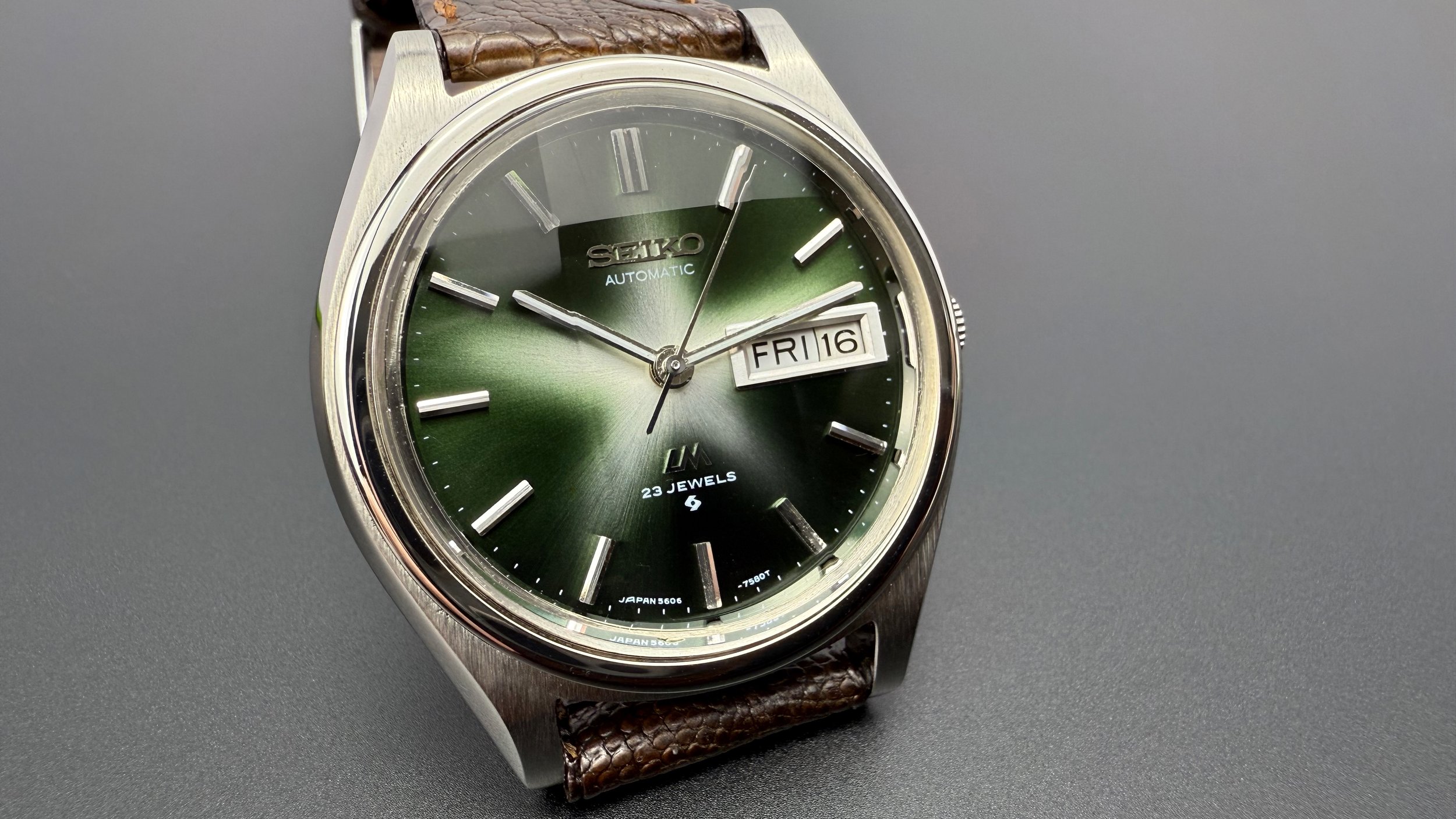A Closer Look at the Vintage Seiko 5 7009-3110: An Iconic SNXJ Precursor
The Seiko 5 series is renowned for its blend of affordability, reliability, and timeless style. The Seiko 5 model with the caliber 7009, specifically the 7009-3110, exemplifies these qualities and holds a special place in the Seiko lineage. This particular watch, produced in 1982, is in mint condition, making it an excellent representation of vintage Seiko craftsmanship and an attractive option for collectors and enthusiasts alike. Here, we’ll delve into the specifics of this model and how it contrasts with later Seiko 5 developments, including the SNXJ line.
Dial and Design: A Fusion of the Old and the New
One unique aspect of this Seiko 5 7009-3110 is its dial, borrowed from the Seiko SNK621 model. The grey sunburst dial features a clean, minimalist design with legible hour markers, lending a modern aesthetic to this vintage piece. The dial’s play with light—offering dynamic changes in tone under different lighting—adds an eye-catching element and timeless appeal.
Unlike the SNXJ line, the 7009-3110 lacks a display caseback, which makes it notably flatter and allows for a slimmer profile on the wrist. This absence of a caseback display, while a defining feature of later models like the SNXJ, enhances the classic feel of the watch, reminiscent of traditional watchmaking where the beauty was often hidden within.
Inside the Case: The Seiko 7009 Movement
The heart of the 7009-3110 is the Seiko caliber 7009, a highly regarded automatic movement produced from around 1979 until 1996. This movement is a precursor to the SNXJ's 7S26 caliber, offering some similarities with its successor but also notable differences that set it apart. The 7009 movement uses 17 jewels, providing smooth operation and reducing friction among the moving parts. In fact, the materials in the 7009 are considered by some collectors to be of slightly better quality than those used in later Seiko 5 models, particularly in terms of durability and finish.
Unlike its successor, the 7S26, which operates at 21,600 beats per hour (bph) and incorporates 21 jewels, the 7009 is slightly less complex but no less reliable. The 7S26 is famed for its durability, though its accuracy falls within a range of -15 to +25 seconds per day—adequate for an automatic movement of its class but not as finely tuned as luxury movements. In contrast, the 7009’s design, though simpler, is built to last, and many examples from the early 1980s still run reliably today with minimal maintenance.
Comparison to the SNXJ Line and Seiko 7S26 Movement
The SNXJ line, featuring the 7S26 movement, became a mainstay in the Seiko 5 series and remained in production until its discontinuation in August 2014. This automatic caliber 7S26, like the 7009, is unidirectional in its winding mechanism but offers a few advancements over its predecessor. The 7S26's inclusion of a display caseback was a popular feature, giving wearers a view of the inner mechanics—a move that appealed to enthusiasts and those interested in horology. However, this additional component made the watch thicker, losing some of the flat elegance found in the 7009-3110.
Additionally, the 7S26 uses 21 jewels instead of 17, theoretically allowing for greater precision and longevity. However, in practice, the 7009 and 7S26 are both highly durable, and the 7009’s use of better quality materials has arguably contributed to its lasting performance, even after decades of use.
Legacy and Collectibility of the Seiko 5 7009-3110
Today, the Seiko 5 7009-3110 stands as a sought-after vintage piece, especially among collectors who appreciate Seiko’s earlier automatic movements. Its flatter profile, simplicity, and enduring reliability capture the essence of the early Seiko 5 philosophy—creating a robust, stylish watch accessible to everyone without compromising quality. The SNXJ series and its 7S26 movement may have continued this legacy into the 21st century, but the 7009 remains a classic, a symbol of Seiko’s dedication to innovation and durability.
Whether you are a seasoned collector or a newcomer to vintage watches, the Seiko 5 7009-3110 with its SNK621-inspired dial and durable 7009 caliber offers an intriguing blend of history, reliability, and timeless style. It’s a reminder of Seiko’s longstanding commitment to quality, making it a treasured addition to any watch collection.
A Closer Look at the Vintage Seiko 5 7009-3110: An Iconic SNXJ Precursor
The Seiko 5 series is renowned for its blend of affordability, reliability, and timeless style. The Seiko 5 model with the caliber 7009, specifically the 7009-3110, exemplifies these qualities and holds a special place in the Seiko lineage. This particular watch, produced in 1982, is in mint condition, making it an excellent representation of vintage Seiko craftsmanship and an attractive option for collectors and enthusiasts alike. Here, we’ll delve into the specifics of this model and how it contrasts with later Seiko 5 developments, including the SNXJ line.
Dial and Design: A Fusion of the Old and the New
One unique aspect of this Seiko 5 7009-3110 is its dial, borrowed from the Seiko SNK621 model. The grey sunburst dial features a clean, minimalist design with legible hour markers, lending a modern aesthetic to this vintage piece. The dial’s play with light—offering dynamic changes in tone under different lighting—adds an eye-catching element and timeless appeal.
Unlike the SNXJ line, the 7009-3110 lacks a display caseback, which makes it notably flatter and allows for a slimmer profile on the wrist. This absence of a caseback display, while a defining feature of later models like the SNXJ, enhances the classic feel of the watch, reminiscent of traditional watchmaking where the beauty was often hidden within.
Inside the Case: The Seiko 7009 Movement
The heart of the 7009-3110 is the Seiko caliber 7009, a highly regarded automatic movement produced from around 1979 until 1996. This movement is a precursor to the SNXJ's 7S26 caliber, offering some similarities with its successor but also notable differences that set it apart. The 7009 movement uses 17 jewels, providing smooth operation and reducing friction among the moving parts. In fact, the materials in the 7009 are considered by some collectors to be of slightly better quality than those used in later Seiko 5 models, particularly in terms of durability and finish.
Unlike its successor, the 7S26, which operates at 21,600 beats per hour (bph) and incorporates 21 jewels, the 7009 is slightly less complex but no less reliable. The 7S26 is famed for its durability, though its accuracy falls within a range of -15 to +25 seconds per day—adequate for an automatic movement of its class but not as finely tuned as luxury movements. In contrast, the 7009’s design, though simpler, is built to last, and many examples from the early 1980s still run reliably today with minimal maintenance.
Comparison to the SNXJ Line and Seiko 7S26 Movement
The SNXJ line, featuring the 7S26 movement, became a mainstay in the Seiko 5 series and remained in production until its discontinuation in August 2014. This automatic caliber 7S26, like the 7009, is unidirectional in its winding mechanism but offers a few advancements over its predecessor. The 7S26's inclusion of a display caseback was a popular feature, giving wearers a view of the inner mechanics—a move that appealed to enthusiasts and those interested in horology. However, this additional component made the watch thicker, losing some of the flat elegance found in the 7009-3110.
Additionally, the 7S26 uses 21 jewels instead of 17, theoretically allowing for greater precision and longevity. However, in practice, the 7009 and 7S26 are both highly durable, and the 7009’s use of better quality materials has arguably contributed to its lasting performance, even after decades of use.
Legacy and Collectibility of the Seiko 5 7009-3110
Today, the Seiko 5 7009-3110 stands as a sought-after vintage piece, especially among collectors who appreciate Seiko’s earlier automatic movements. Its flatter profile, simplicity, and enduring reliability capture the essence of the early Seiko 5 philosophy—creating a robust, stylish watch accessible to everyone without compromising quality. The SNXJ series and its 7S26 movement may have continued this legacy into the 21st century, but the 7009 remains a classic, a symbol of Seiko’s dedication to innovation and durability.
Whether you are a seasoned collector or a newcomer to vintage watches, the Seiko 5 7009-3110 with its SNK621-inspired dial and durable 7009 caliber offers an intriguing blend of history, reliability, and timeless style. It’s a reminder of Seiko’s longstanding commitment to quality, making it a treasured addition to any watch collection.


